- How to Cite
- Language & Lit
- Rhyme & Rhythm
- The Rewrite
- Search Glass

How to Write a Synopsis for a Presentation
Things you'll need.
Everyone who has ever had to deliver a presentation before industry peers, co-workers or customers has faced the daunting task of creating a synopsis of the presentation they plan to give. When a lecture is several hours long, it may often seem impossible to condense the content into a single page or paragraph.
Start by reviewing the parameters for your synopsis. For technical conferences, you may be required to provide a full page synopsis (500 words); for other venues, your synopsis may be just a paragraph (100 to 200 words). If you don't know how long your synopsis should be, contact the program coordinator or your supervisor to ask. You can't write the synopsis without knowing this information.
Move through your presentation notes and highlight the three to five most important ideas you want to address. In a technical presentation, this may be key things people need to know in order to achieve a desired outcome. In a business communication, these may be the key ways people need to change their way of working.
Move through your presentation and highlight the benefits associated with knowing the information you've presented. In a medical presentation, for example, you might measure the benefit in lives saved or hospital stays reduced. In a marketing presentation, you might measure the benefit in revenue increases and costs eliminated.
Copy these key ideas and key benefits onto a new page or into a new computer document. Arrange them so the ideas addressed appear at the top of the page and the benefits appear at the bottom. Condense each sentence so it is short and easy to understand.
Write the synopsis, as a paragraph or a page, based on the outline you just created. Once you've documented what people will learn and how it will benefit them, your synopsis is complete.
- Remember that most of the people who ask you for a synopsis will be using it to sell your presentation to others. It is nothing more or less than a low-key sales pitch for your lecture.
- Avoid jargon. The more technical words you use in a synopsis, the more likely you are to lose readers and thus attendees.
Nancy Fulton is a professional writer with more than 20 years experience writing articles, books, business plans, marketing materials, website content and training products for schools and fortune 500 firms. She has also taught for UCLA and produced multiple films. As a serial entreprenuer she has worked in many industries and with a variety of government agencies.
- PRO Courses Guides New Tech Help Pro Expert Videos About wikiHow Pro Upgrade Sign In
- EDIT Edit this Article
- EXPLORE Tech Help Pro About Us Random Article Quizzes Request a New Article Community Dashboard This Or That Game Popular Categories Arts and Entertainment Artwork Books Movies Computers and Electronics Computers Phone Skills Technology Hacks Health Men's Health Mental Health Women's Health Relationships Dating Love Relationship Issues Hobbies and Crafts Crafts Drawing Games Education & Communication Communication Skills Personal Development Studying Personal Care and Style Fashion Hair Care Personal Hygiene Youth Personal Care School Stuff Dating All Categories Arts and Entertainment Finance and Business Home and Garden Relationship Quizzes Cars & Other Vehicles Food and Entertaining Personal Care and Style Sports and Fitness Computers and Electronics Health Pets and Animals Travel Education & Communication Hobbies and Crafts Philosophy and Religion Work World Family Life Holidays and Traditions Relationships Youth
- Browse Articles
- Learn Something New
- Quizzes Hot
- This Or That Game New
- Train Your Brain
- Explore More
- Support wikiHow
- About wikiHow
- Log in / Sign up
- Education and Communications
- College University and Postgraduate
- Academic Writing
- Research Papers
How to Write a Research Synopsis: Template, Examples, & More
Last Updated: February 12, 2024 Fact Checked
Research Synopsis Template
- Organizing & Formatting
- Writing Your Synopsis
- Reviewing & Editing
This article was reviewed by Gerald Posner and by wikiHow staff writer, Raven Minyard, BA . Gerald Posner is an Author & Journalist based in Miami, Florida. With over 35 years of experience, he specializes in investigative journalism, nonfiction books, and editorials. He holds a law degree from UC College of the Law, San Francisco, and a BA in Political Science from the University of California-Berkeley. He’s the author of thirteen books, including several New York Times bestsellers, the winner of the Florida Book Award for General Nonfiction, and has been a finalist for the Pulitzer Prize in History. He was also shortlisted for the Best Business Book of 2020 by the Society for Advancing Business Editing and Writing. This article has been fact-checked, ensuring the accuracy of any cited facts and confirming the authority of its sources. This article has been viewed 224,841 times.
A research synopsis describes the plan for your research project and is typically submitted to professors or department heads so they can approve your project. Most synopses are between 3,000 and 4,000 words and provide your research objectives and methods. While the specific types of information you need to include in your synopsis may vary depending on your department guidelines, most synopses include the same basic sections. In this article, we’ll walk you step-by-step through everything you need to know to write a synopsis for research.
Things You Should Know
- Begin your research synopsis by introducing the question your research will answer and its importance to your field.
- List 2 or 3 specific objectives you hope to achieve and how they will advance your field.
- Discuss your methodology to demonstrate why the study design you chose is appropriate for your research question.

Organizing Your Research Synopsis

- Find out what citation format you’re supposed to use, as well as whether you’re expected to use parenthetical references or footnotes in the body of your synopsis.
- If you have questions about anything in your guidelines, ask your instructor or advisor to ensure you follow them correctly.

- Title: the title of your study
- Abstract: a summary of your research synopsis
- Introduction: identifies and describes your research question
- Literature Review: a review of existing relevant research
- Objectives: goals you hope to accomplish through your study
- Hypotheses: results you expect to find through your research
- Methodology and methods: explains the methods you’ll use to complete your study
- References: a list of any references used in citations
Tip: Your synopsis might have additional sections, depending on your discipline and the type of research you're conducting. Talk to your instructor or advisor about which sections are required for your department.

- Keep in mind that you might not end up using all the sources you initially found. After you've finished your synopsis, go back and delete the ones you didn't use.
Writing Your Research Synopsis

- Your title should be a brief and specific reflection of the main objectives of your study. In general, it should be under 50 words and should avoid unneeded phrases like “an investigation into.”
- On the other hand, avoid a title that’s too short, as well. For example, a title like “A Study of Urban Heating” is too short and doesn’t provide any insight into the specifics of your research.

- The introduction allows you to explain to your reader exactly why the question you’re trying to answer is vital and how your knowledge and experience make you the best researcher to tackle it.
- Support most of the statements in your introduction with other studies in the area that support the importance of your question. For example, you might cite a previous study that mentions your problem as an area where further research needs to be done.
- The length of your introduction will vary depending on the overall length of your synopsis as well as the ultimate length of your eventual paper after you’ve finished your research. Generally, it will cover the first page or two of your synopsis.

- For example, try finding relevant literature through educational journals or bulletins from organizations like WHO and CDC.
- Typically, a thorough literature review discusses 8 to 10 previous studies related to your research problem.
- As with the introduction, the length of your literature review will vary depending on the overall length of your synopsis. Generally, it will be about the same length as your introduction.
- Try to use the most current research available and avoid sources over 5 years old.

- For example, an objective for research on urban heating could be “to compare urban heat modification caused by vegetation of mixed species considering the 5 most common urban trees in an area.”
- Generally, the overall objective doesn’t relate to solving a specific problem or answering a specific question. Rather, it describes how your particular project will advance your field.
- For specific objectives, think in terms of action verbs like “quantify” or “compare.” Here, you’re hoping to gain a better understanding of associations between particular variables.

- Specify the sources you used and the reasons you have arrived at your hypotheses. Typically, these will come from prior studies that have shown similar relationships.
- For example, suppose a prior study showed that children who were home-schooled were less likely to be in fraternities or sororities in college. You might use that study to back up a hypothesis that home-schooled children are more independent and less likely to need strong friendship support networks.

- Expect your methodology to be at least as long as either your introduction or your literature review, if not longer. Include enough detail that your reader can fully understand how you’re going to carry out your study.
- This section of your synopsis may include information about how you plan to collect and analyze your data, the overall design of your study, and your sampling methods, if necessary. Include information about the study setting, like the facilities and equipment that are available to you to carry out your study.
- For example, your research work may take place in a hospital, and you may use cluster sampling to gather data.

- Use between 100 and 200 words to give your readers a basic understanding of your research project.
- Include a clear statement of the problem, the main goals or objectives of your study, the theories or conceptual framework your research relies upon, and the methods you’ll use to reach your goals or objectives.
Tip: Jot down a few notes as you draft your other sections that you can compile for your abstract to keep your writing more efficient.
Reviewing and Editing Your Research Synopsis

- If you don’t have that kind of time because you’re up against a deadline, at least take a few hours away from your synopsis before you go back to edit it. Do something entirely unrelated to your research, like taking a walk or going to a movie.

- Eliminate sentences that don’t add any new information. Even the longest synopsis is a brief document—make sure every word needs to be there and counts for something.
- Get rid of jargon and terms of art in your field that could be better explained in plain language. Even though your likely readers are people who are well-versed in your field, providing plain language descriptions shows you know what you’re talking about. Using jargon can seem like you’re trying to sound like you know more than you actually do.
Tip: Free apps, such as Grammarly and Hemingway App, can help you identify grammatical errors as well as areas where your writing could be clearer. However, you shouldn't rely solely on apps since they can miss things.

- Reference list formatting is very particular. Read your references out loud, with the punctuation and spacing, to pick up on errors you wouldn’t have noticed if you’d just read over them.
- Compare your format to the one in the stylebook you’re using and make sure all of your entries are correct.

- Read your synopsis backward by starting on the last word and reading each word separately from the last to the first. This helps isolate spelling errors. Reading backward sentence by sentence helps you isolate grammatical errors without being distracted by the content.
- Print your synopsis and circle every punctuation mark with a red pen. Then, go through them and focus on whether they’re correct.
- Read your synopsis out loud, including the punctuation, as though you were dictating the synopsis.

- Have at least one person who isn’t familiar with your area of study look over your synopsis. If they can understand your project, you know your writing is clear. If any parts confuse them, then that’s an area where you can improve the clarity of your writing.

Expert Q&A
- If you make significant changes to your synopsis after your first or second round of editing, you may need to proofread it again to make sure you didn’t introduce any new errors. Thanks Helpful 0 Not Helpful 0

You Might Also Like

- ↑ https://admin.umt.edu.pk/Media/Site/iib1/FileManager/FORMAT%20OF%20SYNOPSIS%2012-10-2018.pdf
- ↑ https://www.scientificstyleandformat.org/Tools/SSF-Citation-Quick-Guide.html
- ↑ https://numspak.edu.pk/upload/media/Guidelines%20for%20Synopsis%20Writing1531455748.pdf
- ↑ https://www.researchgate.net/publication/279917593_Research_synopsis_guidelines
- ↑ https://writingcenter.unc.edu/tips-and-tools/editing-and-proofreading/
- ↑ https://www.cornerstone.edu/blog-post/six-steps-to-really-edit-your-paper/
About This Article

- Send fan mail to authors
Reader Success Stories
Jul 25, 2022
Did this article help you?
Wave Bubble
Aug 31, 2021

Featured Articles

Trending Articles

Watch Articles

- Terms of Use
- Privacy Policy
- Do Not Sell or Share My Info
- Not Selling Info
Don’t miss out! Sign up for
wikiHow’s newsletter
You are using an outdated browser. Please upgrade your browser to improve your experience.
Our vast library of Synopsis PowerPoint templates are professionally designed to elevate your presentation style in any professional meeting. The collection provides a comprehensive framework to professionals across industries to streamline their efforts, ideas and overall message. The fully editable Synopsis PowerPoint and Google Slides templates breathe life into complex facts, figures and information and present them in an engaging manner to ensure a long lasting impact on your audience’s minds.
Our extensive collection of Synopsis PPT templates promote productivity and convenience when it comes to its applications. These templates have been thoughtfully designed to ensure maximum visual impact. Explore our collection of Synopsis presentation templates and download the perfect template to take your presentation to new heights!
- Price <= $5.99
- Price > $5.99

Lessons Learned List PowerPoint Template
Login to use this feature
Add-to-favs lets you build a list for inspiration and future use.
Log in now to start adding your favs.
If you don't have one. A free account also gives you access to our free templates library
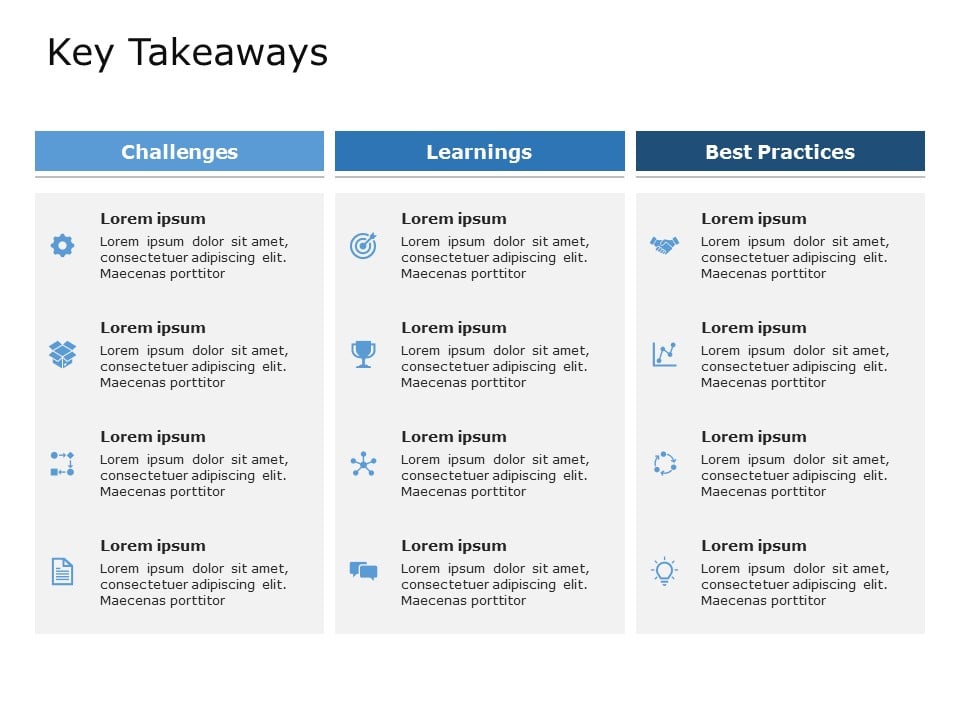
Lessons Learned 11 PowerPoint Template

Lessons Learned Pencil Infographic PowerPoint Template

Lessons Learned 04 PowerPoint Template
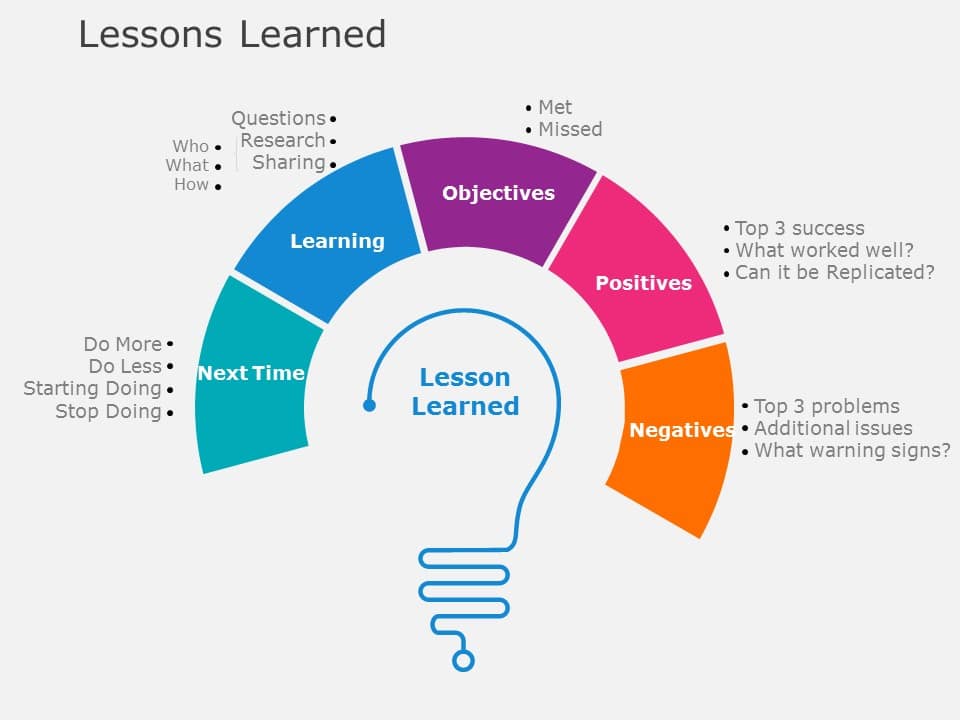
Lessons Learned 02 PowerPoint Template
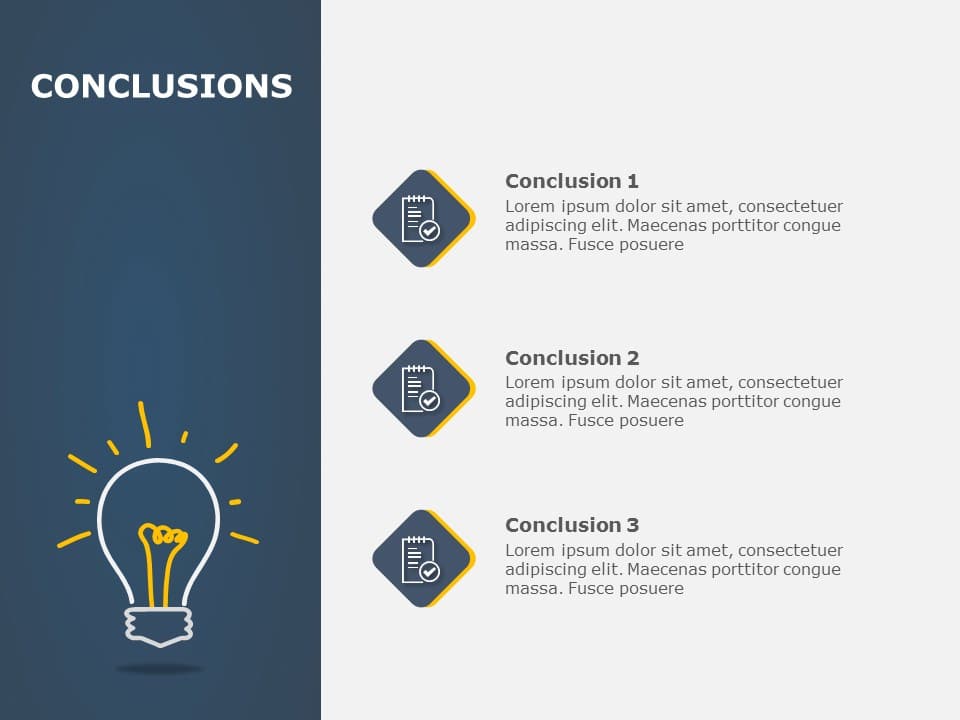
Conclusion Slide 03 PowerPoint Template

Animated Lessons Learned List PowerPoint Template
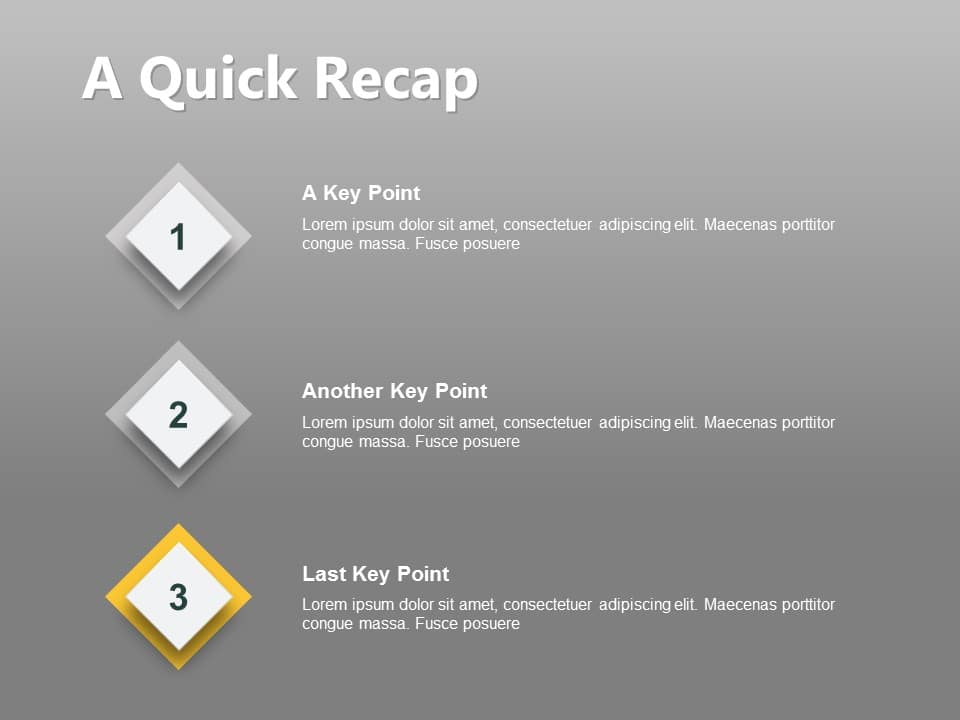
Lessons Learned PPT PowerPoint Template
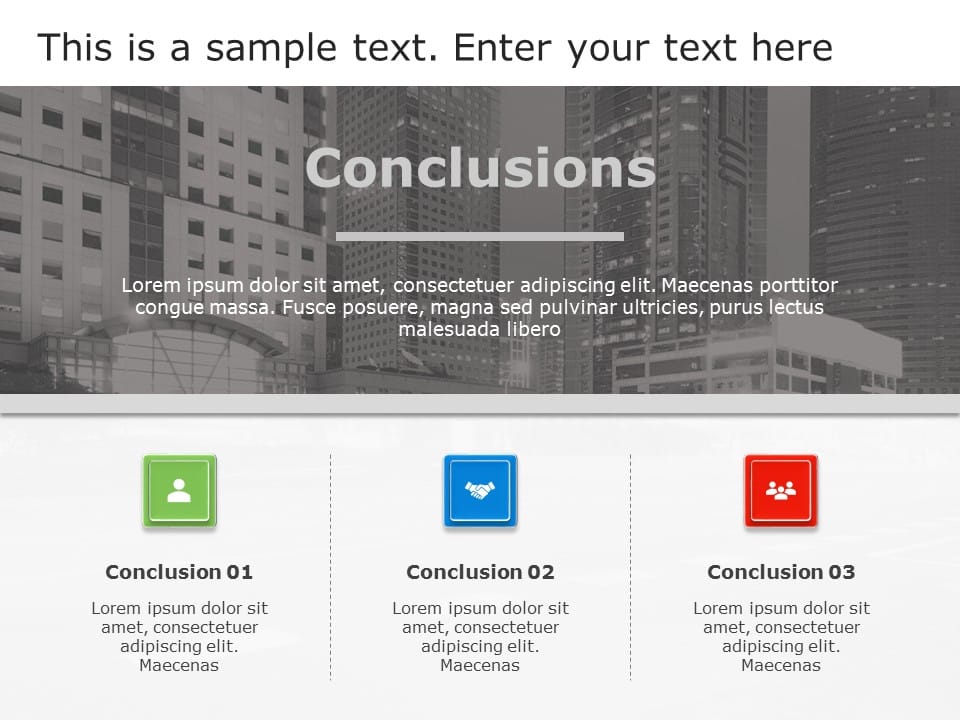
Conclusion Slide 10 PowerPoint Template

Conclusion Slide 04 PowerPoint Template
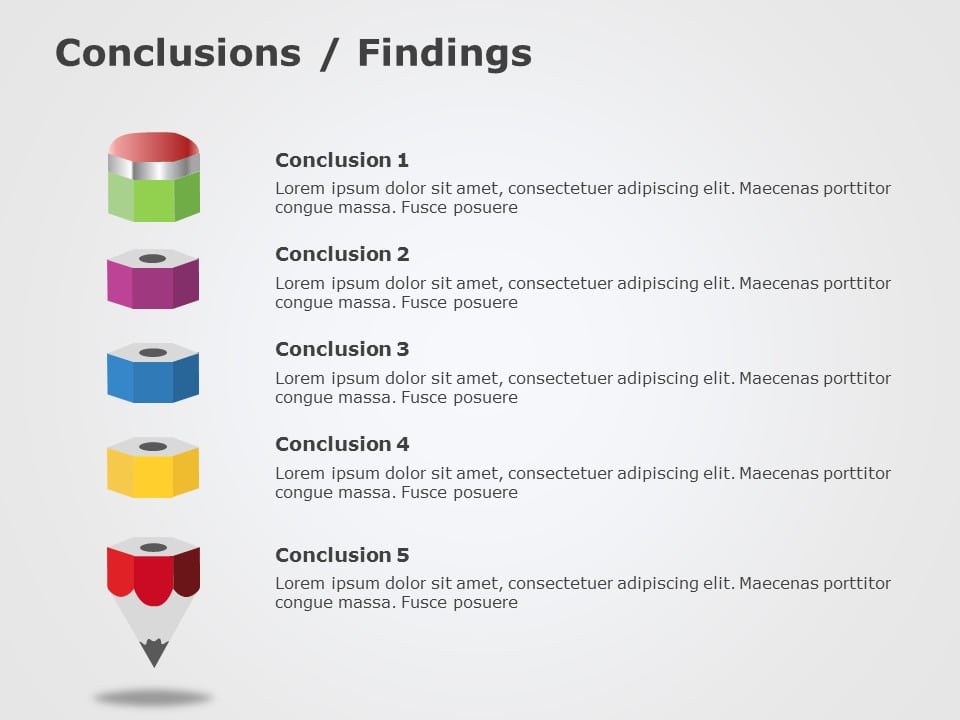
Conclusion Slide 06 PowerPoint Template
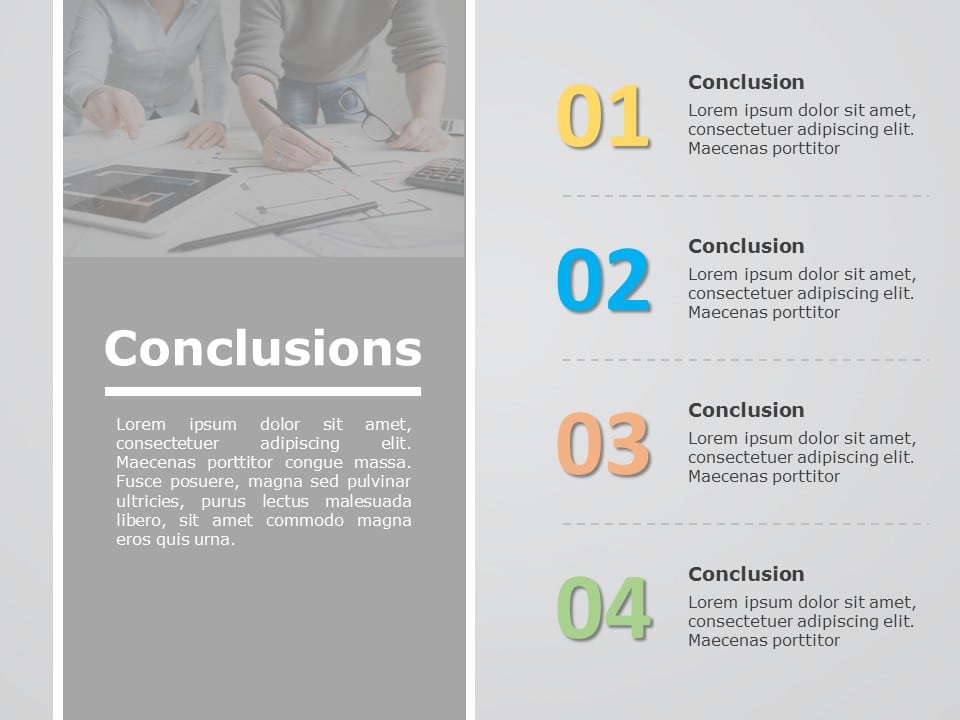
Conclusion Slide 13 PowerPoint Template
Synopsis powerpoint templates for presentations:.
The Synopsis PowerPoint templates go beyond traditional static slides to make your professional presentations stand out. Given the sleek design and customized features, they can be used as PowerPoint as well as Google Slides templates . Inculcated with visually appealing unique and creative designs, the templates will double your presentation value in front of your audience. You can browse through a vast library of Synopsis Google Slides templates, PowerPoint themes and backgrounds to stand out in your next presentation.
What Is A Synopsis PowerPoint Template?
A Synopsis PowerPoint template is a ready-made presentation template that provides a structured framework for creating professional Synopsis presentations. The Synopsis PPT presentation template includes design elements, layouts, and fonts that you can customize to fit your content and brand.
What Are the Advantages of Synopsis Presentation Templates?
Synopsis PPT presentation templates can be beneficial because they:
- Add multiple visual and aesthetic layers to your slides.
- Ensure that complex information, insights and data is presented in a simplistic way.
- Enhance the overall visual appeal of the content.
- Save you a lot of time as you don’t have to start editing from scratch.
- Improve the professional outlook of your presentation.
How To Choose The Best Synopsis Presentation Templates?
Keep the following points in mind while choosing a Synopsis Presentation template for PowerPoint (PPT) or Google Slides:
- Understand your presentation goals and objectives.
- Make sure the Synopsis template aligns with your visual needs and appeal.
- Ensure the template is versatile enough to adapt to various types of content.
- Ensure the template is easily customizable.
Can I Edit The Elements In Synopsis PowerPoint Templates?
Yes, our Synopsis PowerPoint and Google Slides templates are fully editable. You can easily modify the individual elements including icons, fonts, colors, etc. while making your presentations using professional PowerPoint templates .
Are Synopsis PowerPoint Templates Compatible with Google Slides?
Yes, all our Synopsis presentation templates are compatible and can be used as Synopsis Google Slides templates.
How to Download Synopsis PowerPoint Templates for presentations?
To download Synopsis presentation templates, you can follow these steps:
- Select the resolution (16*9 or 4*3).
- Select the format you want to download the Synopsis template in (Google Slides or PowerPoint).
- Make the payment (SlideUpLift has a collection of paid as well as free Synopsis PowerPoint templates).
- You can download the file or open it in Google Slides.
Related Presentation Templates
Self introduction.
60 templates
Slide Layout
4 templates
45 templates
Question Answer
23 templates
Forgot Password?
Privacy Overview
Necessary cookies are absolutely essential for the website to function properly. This category only includes cookies that ensures basic functionalities and security features of the website. These cookies do not store any personal information
Any cookies that may not be particularly necessary for the website to function and is used specifically to collect user personal data via ads, other embedded contents are termed as non-necessary cookies. It is mandatory to procure user consent prior to running these cookies on your website.
How To Write A Synopsis
How to Write a Synopsis – A Simple Format & Guide
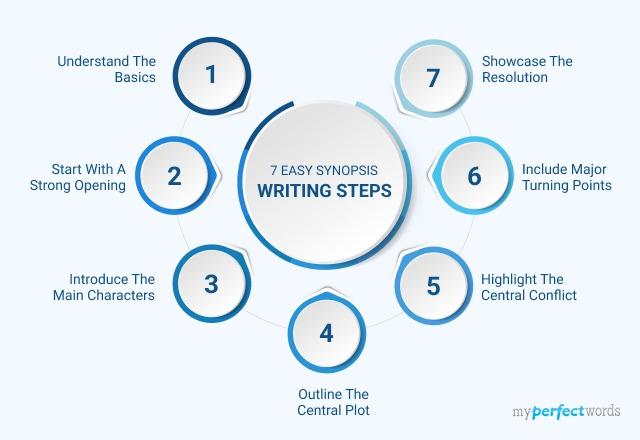
People also read
Learn How to Write an Editorial on Any Topic
Best Tips on How to Avoid Plagiarism
How to Write a Movie Review - Guide & Examples
A Complete Guide on How to Write a Summary for Students
Write Opinion Essay Like a Pro: A Detailed Guide
Evaluation Essay - Definition, Examples, and Writing Tips
How to Write a Thematic Statement - Tips & Examples
How to Write a Bio - Quick Tips, Structure & Examples
How to Write a Comparative Essay – A Complete Guide
Visual Analysis Essay - A Writing Guide with Format & Sample
List of Common Social Issues Around the World
Writing Character Analysis - Outline, Steps, and Examples
11 Common Types of Plagiarism Explained Through Examples
Article Review Writing: A Complete Step-by-Step Guide with Examples
A Detailed Guide on How to Write a Poem Step by Step
Detailed Guide on Appendix Writing: With Tips and Examples
Are you finding it tough to summarize your detailed story into a short synopsis? If the thought of summarizing your narrative seems overwhelming, know that many students face this challenge.
Imagine the frustration when you have worked hard to create an interesting story, only to feel stuck when trying to make a short synopsis.
But don't worry!
In this blog, we'll not only explain how to write a synopsis but also highlight common mistakes that students make.
Let's begin!

Paper Due? Why Suffer? That's our Job!
- 1. What is a Synopsis?
- 2. How to Write a Synopsis?
- 3. How to Format a Synopsis?
- 4. How To Write A Synopsis Examples
- 5. Tips for Writing the Perfect Synopsis
What is a Synopsis?
A synopsis is a concise and systematic summary of a larger piece of work, typically a book, movie, play, or academic paper.
In literature, a book synopsis is a short summary that talks about the main parts of a story, like main characters, and central conflict.
For movies, a synopsis is a brief summary that tells the main story, introduces the characters, and sometimes gives away exciting parts of the plot.
In academia, a research paper synopsis is a short description that talks about what the study is trying to do, how it's done, what was found, and what it all means.Pu
Purpose of Writing a Synopsis
The purpose of writing a synopsis is to provide a concise and informative overview of a larger work, be it a book, movie, or research paper.
In simpler terms, when creating a synopsis, it's important to focus on a few key things:
- Making sure the information is easy to understand
- Getting people interested, helping in decision-making
- Presenting it professionally
- Meeting specific submission guidelines.
Think of a synopsis as a helpful tool that tells a little bit about the big work and follows the rules for where it's being sent.

How to Write a Synopsis?
Writing a synopsis is not a difficult task if you follow the correct procedure. A good synopsis requires proper planning and preparation.
The following are the steps involved in writing synopses effectively:
Understand the Basics
Before starting your synopsis, thoroughly understand the work you're summarizing.
Identify the main characters, character motivations, the central conflict, and the key themes. This foundational understanding is crucial for creating an accurate and engaging summary.
Start with a Strong Opening
The opening of your synopsis should grab attention and set the tone for the story. It should introduce the main elements without giving away too much.
Introduce the Main Characters
Briefly introduce the main characters, emphasizing their roles and relationships within the story. Focus on the key traits that drive their actions.
Outline the Central Plot
Summarize the main plot, emphasizing the key events that drive the story forward. Include the central goal or conflict that propels the characters.
Highlight the Central Conflict
Identify and emphasize the central conflict or challenges the characters face. Clearly articulate the obstacles that stand in their way.
Include Major Turning Points
Highlight significant turning points or major plot twists that add complexity and intrigue to the story. These moments should showcase the characters' development and contribute to the overall narrative.
Showcase the Resolution
Provide a glimpse of how the story concludes without giving away all the details. Indicate how the central conflict is resolved and what changes for the characters.
Tough Essay Due? Hire Tough Writers!
How to Format a Synopsis?
Formatting is a crucial aspect of creating a professional and visually appealing synopsis for agents and editors. Here are some formatting guidelines to consider:
- Keep your synopsis concise, typically around 500 to 700 words. Focus on key plot points and essential details without unnecessary elaboration.
Font and Size:
- Use a standard, easily readable font such as Times New Roman or Arial.
- Use a font size between 10 and 12 points for optimal readability.
Margins and Spacing:
- Set standard one-inch margins on all sides of the document.
- Use standard single-space or double-spacing to enhance readability.
- Use clear and straightforward language. Avoid overly complex sentences or excessive details. Aim for a style that reflects the tone of your work.
Presentation:
- Format your synopsis with a readable font and standard font size. Use a professional layout with clear headings and sections to enhance readability
Character Names:
- Introduce characters by their full names in bold and capslock when first mentioned. This helps clarity without repeating full names.
Character Thumbnails:
- Include brief character thumbnails, providing key traits or motivations. This helps the reader quickly understand the characters' roles in the story.
Extra Points:
- Focus on major plot points and avoid including every detail. Be selective and emphasize on the most impactful elements.
Paragraph Structure:
- Organize your synopsis into clear paragraphs for each section, such as the introduction, main body, and conclusion.
Third Person Presentation:
- Write the synopsis in the third person, even if your story is primarily in the first person. This maintains a professional and objective tone.
- Write your synopsis in the present tense, regardless of the tense used in your actual work. This creates immediacy and engagement.
Document Type:
- Save your synopsis in a widely accepted document format, such as .doc or .pdf.
File Naming:
- Provide a clear and concise file name that includes the title of your work. For example: "Title_Synopsis.docx"
By adhering to these formatting guidelines, you can present a polished and professional synopsis that showcases your attention to detail.
How To Write A Synopsis Examples
Writing a synopsis means summarizing a big piece of work in a short and interesting way. It could be a story, a movie, or even a research paper.
Let's look at some important ideas and examples to help you get better at writing a good synopsis.
How To Write A Synopsis Sample:
How to Write a Synopsis for a Film
TV Show Synopsis - Example
Synopsis Example for Novel
Synopsis For a Book
Synopsis For a Short Story
Synopsis For a Story
Synopsis For a Short Film
Here are some more examples related to synopsis writing for research and academia!
Thesis Synopsis - Example
Synopsis For Research
Synopsis For a Project
A Synopsis For Phd
Synopsis of an Article
Tips for Writing the Perfect Synopsis
Here are some essential tips to help you refine your synopsis-writing process and create a compelling summary that captivates your audience:
- Focus on the Main Plot: Avoid including every detail; instead, highlight the key events that drive the story forward.
- Capture the Tone of the Work: Reflect the mood and style of the original work in your synopsis.
- Emphasize Conflict and Stakes : Clearly articulate the central conflict and what's at stake for the characters.
- Avoid Spoilers: Provide enough information to generate interest without giving away critical plot twists or the ending.
- Keep It Concise: A synopsis is a snapshot, not the entire story. Aim for clarity and conciseness to maintain the reader.
All in all, now you have a detailed guide on how to write a synopsis. Take help from the tips and examples to craft an engaging synopsis on your own!
But if you are still confused or don’t have time to complete your synopsis, MyPerfectWords.com is always just a click away!
Our legit essay writing service offers high-quality services. We have experienced essay writers who can easily write your synopsis without any errors.
They understand your requirements and tailor them according to your needs.
So, why wait? Hire a paper writer now and get your synopsis on time!
Frequently Asked Question
What is the difference between a synopsis and a blurb.
The synopsis is comprehensive and aimed at agents, publishers, or those seeking a detailed understanding. While the blurb is concise and crafted for readers to decide if they want to engage with the book.
How Do You Start Writing A Synopsis?
To start writing a synopsis, begin by identifying the main elements of your work, including the central plot, key characters, and major themes.

Write Essay Within 60 Seconds!

Dr. Barbara is a highly experienced writer and author who holds a Ph.D. degree in public health from an Ivy League school. She has worked in the medical field for many years, conducting extensive research on various health topics. Her writing has been featured in several top-tier publications.

Paper Due? Why Suffer? That’s our Job!
Keep reading


PhD Dissertation Defense Slides Design: Start
- Tips for designing the slides
- Presentation checklist
- Example slides
- Additional Resources
Purpose of the Guide
This guide was created to help ph.d. students in engineering fields to design dissertation defense presentations. the guide provides 1) tips on how to effectively communicate research, and 2) full presentation examples from ph.d. graduates. the tips on designing effective slides are not restricted to dissertation defense presentations; they can be used in designing other types of presentations such as conference talks, qualification and proposal exams, and technical seminars., the tips and examples are used to help students to design effective presentation. the technical contents in all examples are subject to copyright, please do not replicate. , if you need help in designing your presentation, please contact julie chen ([email protected]) for individual consultation. .
- Example Slides Repository
- Defense slides examples Link to examples dissertation defense slides.
Useful Links
- CIT Thesis and dissertation standards
- Dissertations and Theses @ Carnegie Mellon This link opens in a new window Covers 1920-present. Full text of some dissertations may be available 1997-present. Citations and abstracts of dissertations and theses CMU graduate students have published through UMI Dissertation Publishing. In addition to citations and abstracts, the service provides free access to 24 page previews and the full text in PDF format, when available. In most cases, this will be works published in 1997 forward.
- Communicate your research data Data visualization is very important in communicating your data effectively. Check out these do's and don'ts for designing figures.
Power Point Template and other Resources
- CEE Powerpoint Slide Presentation Template 1
- CEE Powerpoint Slide Presentation Template 2
Source: CEE Department Resources https://www.cmu.edu/cee/resources/index.html
- CMU Powerpoint Slide Template
Source: CMU Marketing and Communications
https://www.cmu.edu/marcom/brand-standards/downloads/index.html
- Use of CMU logos, marks, and Unitmarks
Email me for questions and schedule an appointment

Top 7 tips for your defense presentation
1. show why your study is important, remember, your audience is your committee members, researchers in other fields, and even the general public. you want to convince all of them why you deserve a ph.d. degree. you need to talk about why your study is important to the world. in the engineering field, you also need to talk about how your study is useful. try to discuss why current practice is problematic or not good enough, what needs to be solved, and what the potential benefits will be. , see how dr. posen and dr. malings explained the importance of their studies..
- Carl Malings Defense Slides with Notes
- I. Daniel Posen Defense Slides with Notes
2. Emphasize YOUR contribution
Having a ph.d. means that you have made some novel contributions to the grand field. this is about you and your research. you need to keep emphasizing your contributions throughout your presentation. after talking about what needs to be solved, try to focus on emphasizing the novelty of your work. what problems can be solved using your research outcomes what breakthroughs have you made to the field why are your methods and outcomes outstanding you need to incorporate answers to these questions in your presentation. , be clear what your contributions are in the introduction section; separate what was done by others and what was done by you. , 3. connect your projects into a whole piece of work, you might have been doing multiple projects that are not strongly connected. to figure out how to connect them into a whole piece, use visualizations such as flow charts to convince your audience. the two slides below are two examples. in the first slide, which was presented in the introduction section, the presenter used a flow diagram to show the connection between the three projects. in the second slide, the presenter used key figures and a unique color for each project to show the connection..

- Xiaoju Chen Defense Slides with Notes
4. Tell a good story
The committee members do not necessarily have the same background knowledge as you. plus, there could be researchers from other fields and even the general public in the room. you want to make sure all of your audience can understand as much as possible. focus on the big picture rather than technical details; make sure you use simple language to explain your methods and results. your committee has read your dissertation before your defense, but others have not. , dr. cook and dr. velibeyoglu did a good job explaining their research to everyone. the introduction sessions in their presentations are well designed for this purpose. .
- Laren M. Cook Defense Slides with Notes
- Irem Velibeyoglu Defense with Notes
5. Transition, transition, transition
Use transition slides to connect projects , it's a long presentation with different research projects. you want to use some sort of transition to remind your audience what you have been talking about and what is next. you may use a slide that is designed for this purpose throughout your presentation. , below are two examples. these slides were presented after the introduction section. the presenters used the same slides and highlighted the items for project one to indicate that they were moving on to the first project. throughout the presentation, they used these slides and highlighted different sections to indicate how these projects fit into the whole dissertation. .

You can also use some other indications on your slides, but remember not to make your slides too busy. Below are two examples. In the first example, the presenter used chapter numbers to indicate what he was talking about. In the second example, the presenter used a progress bar with keywords for each chapter as the indicator.

Use transition sentences to connect slides
Remember transition sentences are also important; use them to summarize what you have said and tell your audience what they will expect next. if you keep forgetting the transition sentence, write a note on your presentation. you can either write down a full sentence of what you want to say or some keywords., 6. be brief, put details in backup slides , you won't have time to explain all of the details. if your defense presentation is scheduled for 45 minutes, you can only spend around 10 minutes for each project - that's shorter than a normal research conference presentation focus on the big picture and leave details behind. you can put the details in your backup slides, so you might find them useful when your committee (and other members of the audience) ask questions regarding these details., 7. show your presentation to your advisor and colleagues, make sure to ask your advisor(s) for their comments. they might have a different view on what should be emphasized and what should be elaborated. , you also want to practice at least once in front of your colleagues. they can be your lab mates, people who work in your research group, and/or your friends. they do not have to be experts in your field. ask them to give you some feedback - their comments can be extremely helpful to improve your presentation. , below are some other tips and resources to design your defense presentation. .
- Tips for designing your defense presentation
How important is your presentation, and cookies?

- Next: Tips for designing the slides >>
- Last Updated: Jan 9, 2024 11:18 AM
- URL: https://guides.library.cmu.edu/c.php?g=883178
- Current Students
- News & Press
- Exam Technique for In-Person Exams
- Revising for 24 Hour Take Home Exams
- Introduction to 24 Hour Take Home Exams
- Before the 24 Hour Take Home Exam
- Exam Technique for 24 Hour Take Home Exams
- Structuring a Literature Review
- Writing Coursework under Time Constraints
- Reflective Writing
- Writing a Synopsis
- Structuring a Science Report
- Presentations
- How the University works out your degree award
- Personal Extenuating Circumstances (PEC)
- Accessing your assignment feedback via Canvas
- Inspera Digital Exams
- Writing Introductions and Conclusions
- Paragraphing
- Reporting Verbs
- Signposting
- Proofreading
- Working with a Proofreader
- Writing Concisely
- The 1-Hour Writing Challenge
- Apostrophes
- Semi-colons
- Run-on sentences
- How to Improve your Grammar (native English)
- How to Improve your Grammar (non-native English)
- Independent Learning for Online Study
- Reflective Practice
- Academic Reading
- Strategic Reading Framework
- Note-taking Strategies
- Note-taking in Lectures
- Making Notes from Reading
- Using Evidence to Support your Argument
- Integrating Scholarship
- Managing Time and Motivation
- Dealing with Procrastination
- How to Paraphrase
- Quote or Paraphrase?
- How to Quote
- Referencing
- Artificial Intelligence and Academic Integrity
- Use and limitations of generative AI
- Acknowledging use of AI
- Numeracy, Maths & Statistics
- Library Search
- Search Techniques
- Keeping up to date
- Evaluating Information
- Managing Information
- Thinking Critically about AI
- Using Information generated by AI
- Digital Capabilities
- SensusAccess
- Develop Your Digital Skills
- Digital Tools to Help You Study

Learn how to prepare and write a synopsis assignment.
- Newcastle University
- Academic Skills Kit
- Assignment Types
A synopsis is a brief summary which gives readers an overview of the main points. In an academic context, this is usually a summary of a text (a journal article, book, report etc) but in some instances you might be writing a synopsis of a talk, film or other form of presentation. A synopsis is a neutral summary, objectively capturing the main points, rather than your own perspective or critique, and it focusses directly on the text you’re summarising rather than being a wider discussion of a topic, as an essay might be.
A synopsis aims to give the reader a full, if brief, account of the whole text so that they can follow its main points without having to read it themselves. It’s not a ‘trailer’ designed to tempt your audience to read the text itself, so you don’t have to worry about ‘hooking’ them in with hints and high points or ‘spoiling the ending’ - give the whole text equal coverage, including the conclusions. You could add some commentary which gives the reader a bit of context about the text, including the authors and circumstances it was written in (for example, if it is part of a debate, particular school of thought or its significance and what impact it’s had).
Writing a good synopsis is a skill, and there are a number of challenges:
- Separating the main points from the minor detail
- Knowing what to leave out as well as what to include
- Giving a sense of the overall narrative as well as listing the key points
- Covering the whole text within a small word limit
- Knowing how closely to stick to the original, especially in terms of the wording
- Whether to give all key points equal treatment, or cover some more briefly, even combining them
- Rephrasing things concisely without losing the meaning or misrepresenting it
- Not leaving out anything crucial to understanding the whole overall message
A good synopsis will allow the reader to feel as if they’d skimread the whole text themselves, understanding the overall gist and highlighting what they need to know. A poor synopsis will get bogged down in detail, giving a confused account of the whole story by just listing points, miss out major points or give an inaccurate or one-sided account or stick so closely to the original that it becomes plagiarism without demonstrating a real understanding by the person summarising it.
How to prepare a synopsis
Boiling down the key points and overall narrative of the original means good reading and note-taking skills which aim to identify and boil down key points to their essence. You could try some of the following approaches:
- Read the whole text, and afterwards, without re-reading, jot down your first initial summary in 50 words to capture its overall point. You can check it back for accuracy or anything you left out, but stick within ca 50 words
- Read the introduction and first line of each paragraph to get a sense of the overall structure and key points within it
- Highlight one sentence in each paragraph that you think is essential detail to understanding that section
- Alternatively, with a marker pen, cross out anything that isn’t essential to an understanding of the whole section or text
- Jot down only key words as a summary of each point rather than whole sentences
- Read each paragraph and summarise it without looking, in one sentence of your own
- Consider how many points you can make within your word count, and reduce or combine your list of summarised points down to this number
You could start small, identifying just keywords or sentences at first and then work them up into phrases, bullet points and sentences as a rough plan or draft, or you could start big with the original text and reduce each section, paragraph and sentence summary again and again until you have boiled it down to its essence.
When you start to prepare your first plan or draft, try to use your notes or memory and step away from the original as much as you can. You can go back and check it afterwards, but you need to create some distance to be able to create your own account and have confidence in the points you have identified as essential.
Writing a synopsis
The main decisions facing you as you write up your summary are about how closely to stick to the original in terms of structure and style, and how much attention to give to each point.
- You could begin your synopsis with a brief context, explaining who the authors are, the context and significance of their work, as well as anything you think might help the reader to understand the following summary
- The most common structure is to follow that of the original text, to give a sense of its narrative flow as well as the key points within it. You could choose to depart from it a little though, perhaps glossing over some points faster than others, combining two sections which go together or aren’t enough in their own right, possibly even changing the order a little where it helps to combine two similar points. Careful use of signposting language will help the reader clearly follow the structure (and note anywhere you’ve changed it from the original) so they can identify the bit you’re talking about in the original if they want to
- The style will naturally be strongly influenced by the original wording, but you should phrase it in your own words wherever possible. It’s harder to nibble away words from a much longer original than it is to start again and use your own concise phrasing, and you want to demonstrate your own understanding to the reader. You could use the odd original phrase or quotation here or there, but the synopsis needs to be more than a collage of quotations; it’s a thing in its own right rather than a cut-down version of the original
- You can also show your own response to the text in the way you use language to guide the reader to what you feel are the key points and (briefly) why. Your own voice doesn’t need to be very obvious in the synopsis, as it’s about the text rather than your reaction to it, but you have made analytical decisions about what is important, and might want to explain to the reader why these points are significant in understanding the whole
- What is the main purpose of this text? What did it aim to discover, explain or prove?
- Why was this research done? How significant is it?
- How was the research conducted? What kind of research is it?
- What were the three (or four, five) main things I should be aware of from this paper?
- What is their line of argument?
- What is their overall conclusion, recommendation, finding? Why is that important?
Managing word count
The trick to writing a concise synopsis which keeps within your word limit is not to start from the much bigger original text, but from your own boiled down notes. If you’re over the word count, you could start cutting out words that don’t seem essential, but if you go too far, you end up with a text which does not read well and doesn’t hang together. It might be better to remove whole sentences and perhaps whole points, than nibble away at words here and there.
Download this guide as a PDF
Learn how to prepare and write a synopsis assignment. **PDF Download**
How to Summarize a PowerPoint Presentation: A Step-by-Step Guide
Summarizing a PowerPoint presentation is a skill that can come in handy in various situations. Maybe you’ve just watched a colleague’s presentation and need to report back to your team, or perhaps you’re studying for an exam and want to condense the material. To summarize a PowerPoint effectively, you’ll need to identify the key points, understand the presentation’s purpose, and distill the information into a concise format. By mastering these steps, you’ll be able to communicate the essence of any presentation to your audience efficiently.
Once you’ve summarized the PowerPoint presentation, you’ll have a handy reference that captures the main ideas and supporting details without the fluff. This summary can serve as a study aid, a quick refresher, or a tool to brief others who may not have the time to go through the entire presentation.
Introduction
Let’s face it, sitting through a lengthy PowerPoint presentation can sometimes feel like a chore, especially when all you need are the highlights. Maybe you’re a busy professional with back-to-back meetings, a student juggling multiple assignments, or just someone who values efficiency. Whatever the case, being able to summarize a PowerPoint presentation is a valuable skill that can save you time and keep you informed.
Why is this ability so important? For starters, it helps you to quickly sift through information and focus on what’s essential. In our fast-paced world, time is of the essence, and being able to distill a lengthy presentation into a few key points can be a game-changer. Moreover, it’s not only about personal convenience; summarizing skills are crucial when you have to convey the gist of a presentation to others. Whether you’re briefing a colleague, preparing notes for a study group, or delivering a report to a client, a well-crafted summary can make all the difference. So, let’s dive into the how-to of summarizing a PowerPoint presentation, shall we?
Step by Step Tutorial: How to Summarize a PowerPoint Presentation
Before we jump into the steps, let’s establish what we’re aiming for. A good summary of a PowerPoint presentation should capture the main ideas, the supporting details, and the presenter’s intended message, all while being brief and easy to understand.
Step 1: Review the Entire Presentation
Start by going through the entire PowerPoint presentation.
Reviewing the presentation in its entirety allows you to get a sense of the overall flow and the key themes. Pay attention to the title slides and the concluding slides, as they often contain the main message and summary points.
Step 2: Identify the Key Points
Look for the main ideas in each slide.
Each slide usually focuses on a single main idea. Look for bullet points, bolded text, or headings as clues to what the presenter considers important. Make note of these points as they will form the backbone of your summary.
Step 3: Understand the Purpose
Determine the purpose of the presentation.
Understanding why the presentation was created helps to frame your summary. Was it to inform, persuade, or instruct? Knowing the intent will guide you in deciding what details are crucial for your summary.
Step 4: Condense the Information
- Condense the information into a concise format.
Now that you have the key points and the purpose, start writing your summary. Aim to express the ideas as simply and clearly as possible, without losing the original meaning. If a slide’s content can be said in one sentence instead of three, do it.
Step 5: Review and Edit
Review your summary and refine it.
Go through your summary to ensure it’s coherent and that it accurately reflects the presentation’s content and purpose. Edit out any redundancies or unclear statements.
Additional Information
When summarizing a PowerPoint presentation, it’s essential to keep the audience in mind. Who will be reading your summary? What do they need to know? Tailoring the summary to the needs of your audience can make it more effective. Additionally, consider using visual aids from the original presentation, such as charts or graphs, if they help illustrate a point more clearly.
Remember, a good summary is not just a list of points but a coherent mini-version of the presentation. It should flow logically and be engaging to read. Lastly, practice makes perfect. The more you practice summarizing presentations, the better you’ll become at capturing the essence of the content. So next time you sit through a PowerPoint, why not give it a try?
- Review the entire PowerPoint presentation.
- Identify the key points in each slide.
- Understand the purpose of the presentation.
- Review and edit your summary.
Frequently Asked Questions
What if the powerpoint presentation is very long.
Start by breaking it down into sections, and summarize each section before attempting to summarize the whole presentation. This will make the task more manageable.
Can I include quotes from the presentation in my summary?
Yes, but use them sparingly and only if they emphasize a key point effectively.
Should I use the same slide titles in my summary?
You can, but it’s not necessary. The aim is to capture the main ideas, not to replicate the presentation’s structure.
Is it okay to leave out examples used in the presentation?
If the examples are used to illustrate key points, briefly mention them. Otherwise, focus on the main ideas and leave out specific examples.
How long should my summary be?
There’s no one-size-fits-all answer, but a good rule of thumb is to make it as brief as possible while still covering all key points.
Summarizing a PowerPoint presentation is an art and a skill that can be honed with practice. Whether you’re a student, a professional, or simply someone who values brevity, being able to condense information efficiently is incredibly valuable. Remember, the goal is to capture the essence of the presentation, not to replicate it.
Use your judgment to determine what’s essential and what can be left out. With the steps and tips outlined in this article, you’re well on your way to becoming an expert summarizer. So next time you’re faced with a lengthy presentation, don’t despair. Embrace the challenge and flex those summarizing muscles!

Matthew Burleigh has been writing tech tutorials since 2008. His writing has appeared on dozens of different websites and been read over 50 million times.
After receiving his Bachelor’s and Master’s degrees in Computer Science he spent several years working in IT management for small businesses. However, he now works full time writing content online and creating websites.
His main writing topics include iPhones, Microsoft Office, Google Apps, Android, and Photoshop, but he has also written about many other tech topics as well.
Read his full bio here.
Share this:
Related posts:.
- How to Set Time for Slides in Powerpoint
- How to Save Powerpoint as PDF with Notes
- How to Add Page Numbers in Powerpoint 2010
- How to Loop a Slideshow on Powerpoint 2013
- How to Delete a Slide in Powerpoint 2010
- How to Unhide a Slide in Powerpoint 2013
- How to End Powerpoint on Last Slide in Powerpoint 2010
- How to Hide a Slide in Powerpoint 2010
- How to Make a Powerpoint Slide Vertical in Powerpoint 2013
- How to Rotate a Slide in PowerPoint: A Step-by-Step Guide
- How to Change Hyperlink Color in Powerpoint 2010 (An Easy 5 Step Guide)
- How Is Microsoft PowerPoint Used in Business: A Comprehensive Guide
- How to Drag Slides From One PowerPoint to Another: A Step-by-Step Guide
- How to Duplicate a Slide in Powerpoint 2010
- How to Insert Slides from Another Presentation in Powerpoint 2010
- How to Copy a PowerPoint to a New PowerPoint: A Step-by-Step Guide
- How to: Effortlessly Create PowerPoint Looping Presentations
- How to Embed a GIF in PowerPoint: A Step-by-Step Guide
- How to Insert Clipart in PowerPoint: A Step-by-Step Guide
- How to Hide a Selected Slide in Powerpoint 2013
Home Blog Business Executive Summary: A Guide to Writing and Presentation
Executive Summary: A Guide to Writing and Presentation
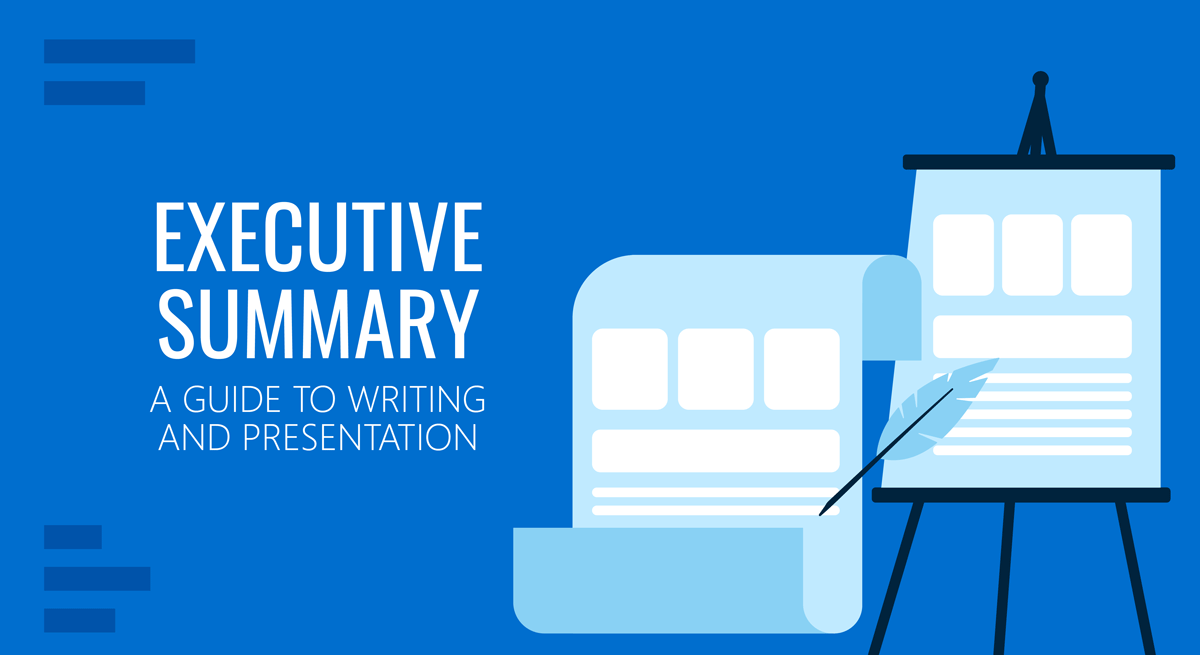
Executive summaries precede nearly every type of business document. Despite being the shortest part, they often leave the biggest impression on the reader. Yet, many writers choose to treat an executive summary as an afterthought. (And some presenters too!). Why? Because writing an executive summary is a seemingly hard task. But our mission is to prove otherwise!
What is an Executive Summary?
An executive summary is a preface to a larger business document such as an annual report, business plan, or whitepaper, succinctly summarizing the key discussion points. Effectively, an executive summary offers a preview of the content, so that the reader could form a baseline opinion about the contents prior to diving into a deep reading session.
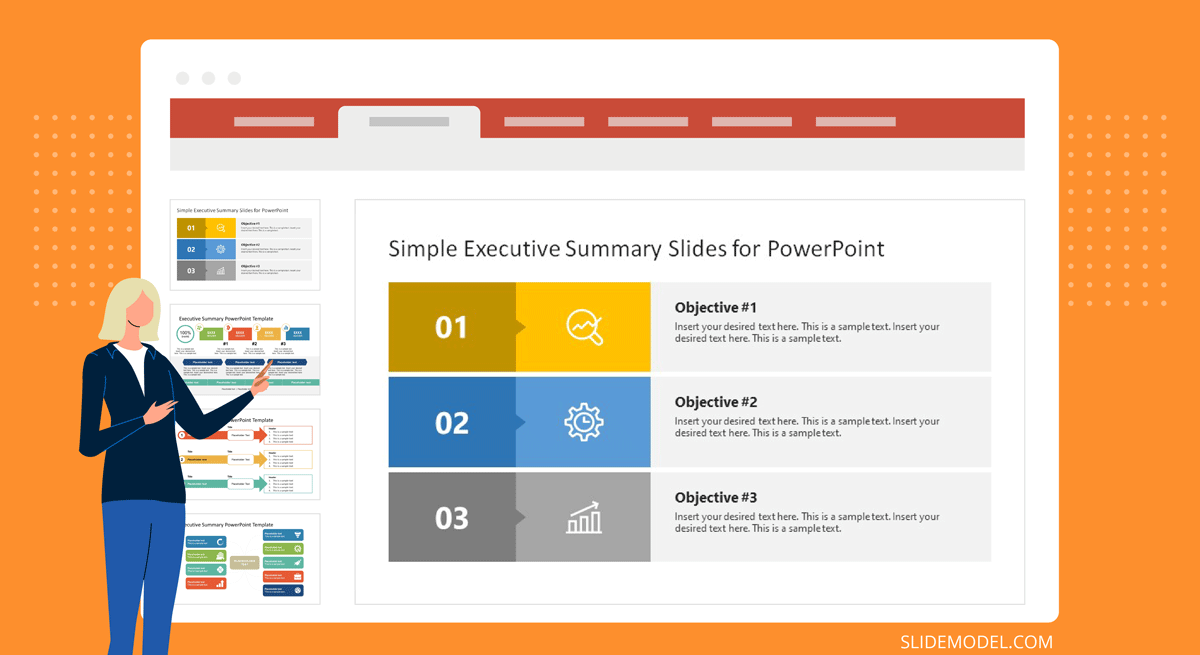
The University of Arizona offers a more elaborated executive summary definition which also notes that an executive summary should:
- Restate the purpose of the follow-up document
- Highlight the key discussion points and most notable facts
- Relay any notable results, conclusions, or recommendations
Though an executive summary is just a foreword to a bigger report, it’s one of the most labor-intensive items as you have to condense a lot of information into a high-level summary. Oftentimes, an executive summary also gets prominent placement in the follow-up presentation, done on the report.
Executive Summary Examples
Nearly every type of business document will have an executive summary. Some are better structured and presented than others. But it’s not just limited to business documents. Executive summaries are also used in scientific projects, articles, and education. Below are several admirable executive summary examples you may want to use as an inspiration for writing.
Accenture: Gaming: The Next Super Platform
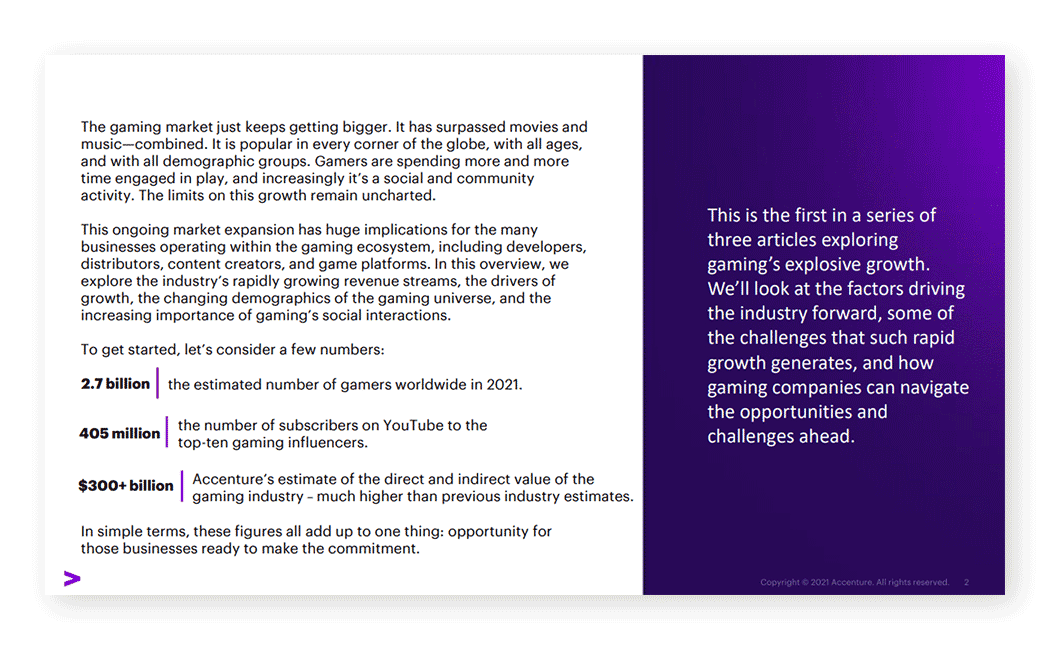
This executive summary for an industry report opens with some big quantifiable claims, clearly communicating the main agenda — describing the size and state of the global gaming market. The gaming industry is a huge market. The pullout texts on the sidebar further detail the scope of the document. Plus clarify for whom this report is intended.
IBM: Cost of a Data Breach Report 2020
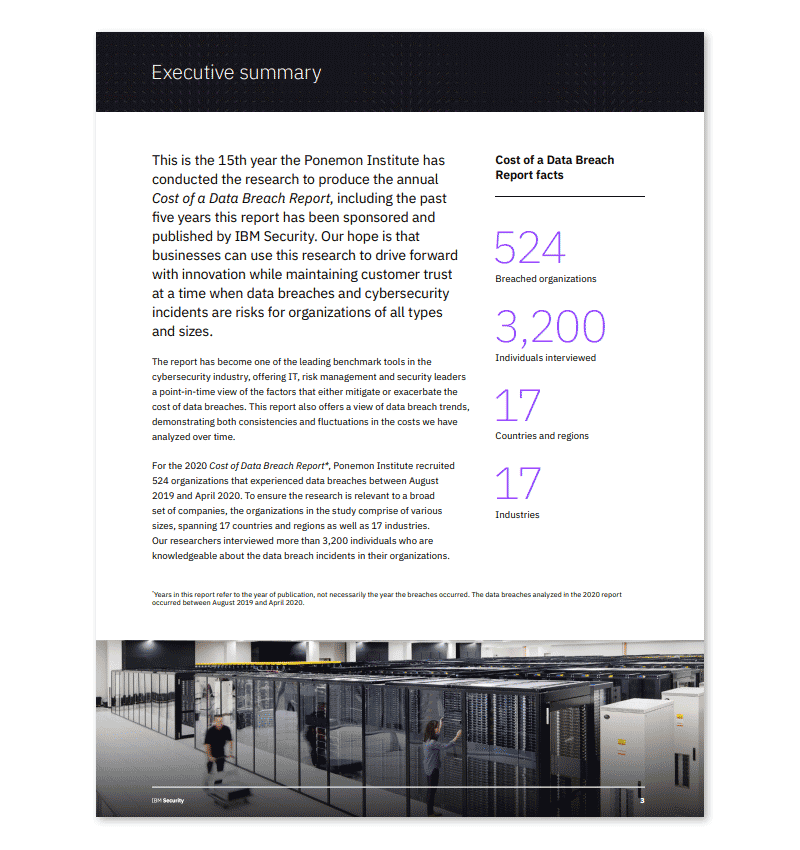
IBM conducts an annual joint report on cybersecurity with Ponemon Institute. They open the executive summary with a brief recap of their mission and past research. Then dwell on this year’s findings and methodology. If you are writing an executive summary for a similarly massive original research, it’s worth focusing more on your techniques for obtaining data and arriving at the conclusions as IBM did.
Deloitte Digital: Exploring the value of emotion-driven engagement
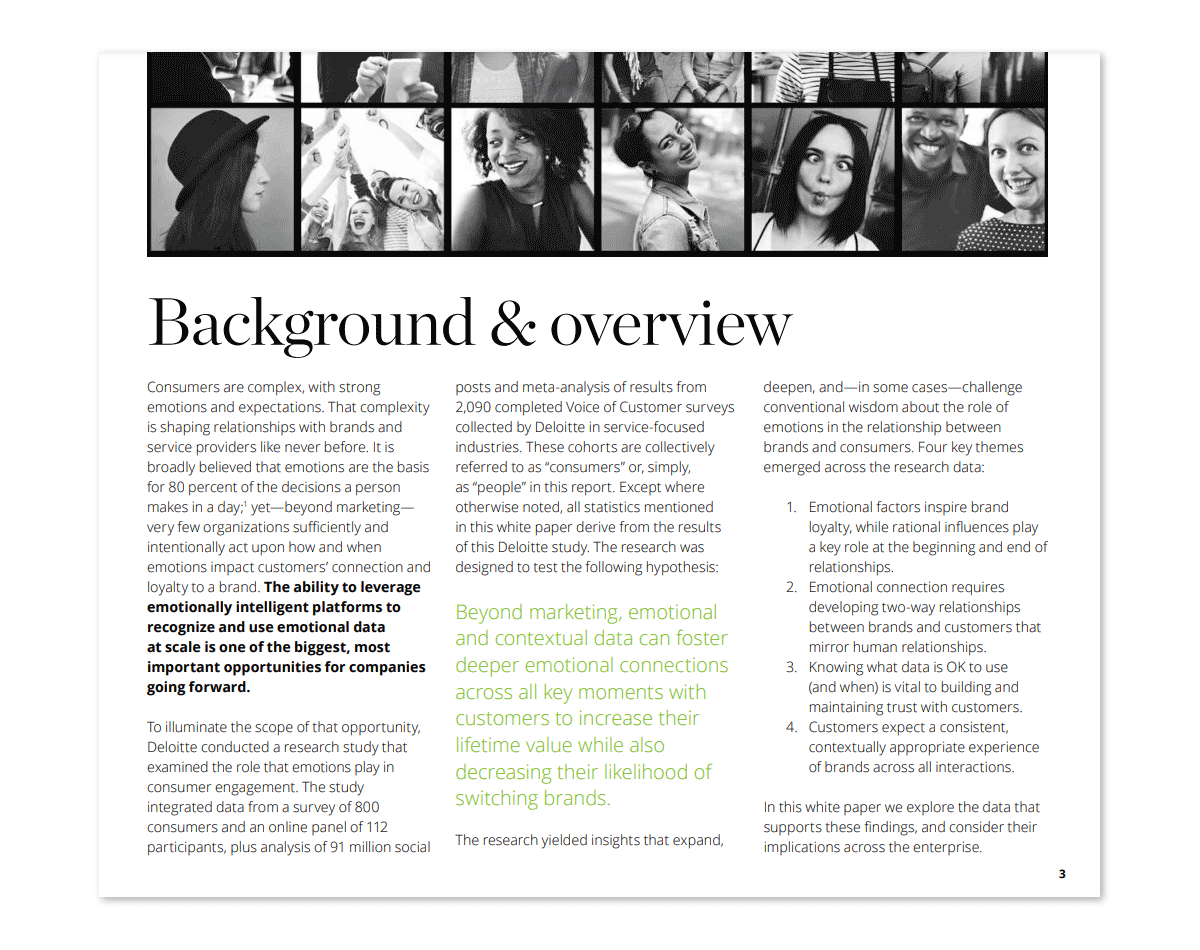
Deloitte selected a more narrative style for this executive summary, mixing some key data points and methodology with the core messaging of the report. This is a good example of structured data presentation . On one hand, you have an engaging narration flow. On the other, the summary covers all the important discussion points.
Executive Summary Format
As the above executive summary examples illustrated, there is no one fit-it-all format for writing an executive study. The best approach depends on your report type, purpose, and contents.
That being said, an executive summary needs to fulfill several earlier mentioned criteria — offer a preview, provide key information at glance, showcase any results, recommendations. That’s what most readers expect to see on the first page after all.
The easiest way to approach writing is to draft a preliminary executive summary outline featuring the following subsections:
- General introduction, explaining the key problems discussed
- Main problem statement(s)
- Selected findings or recommendations
- The importance of discussed points
Since you’d also be likely working on presenting the executive summary to other stakeholders , it helps you keep the above structured as bullet points at first. So that you could easily transfer the main ideas to your executive summary PowerPoint slide .
How Long Should an Executive Summary Be?
As a rule of thumb, an executive summary should not go longer than one vertical page. That is an equivalent of 300-500 words, depending on the typeface. For longer reports, two pages (a horizontal split) may be acceptable. But remember, brevity is key. You are working on a trailer for a movie (the full report).
How to Write an Executive Summary: a 3-Step Framework
You can start with the aforementioned loose format and then adapt it to your document type. Remember, you don’t need to follow all the recommendations to a T. Instead, mix some ideas to make your executive summary sound both professional and engaging. Here are several tips for that:
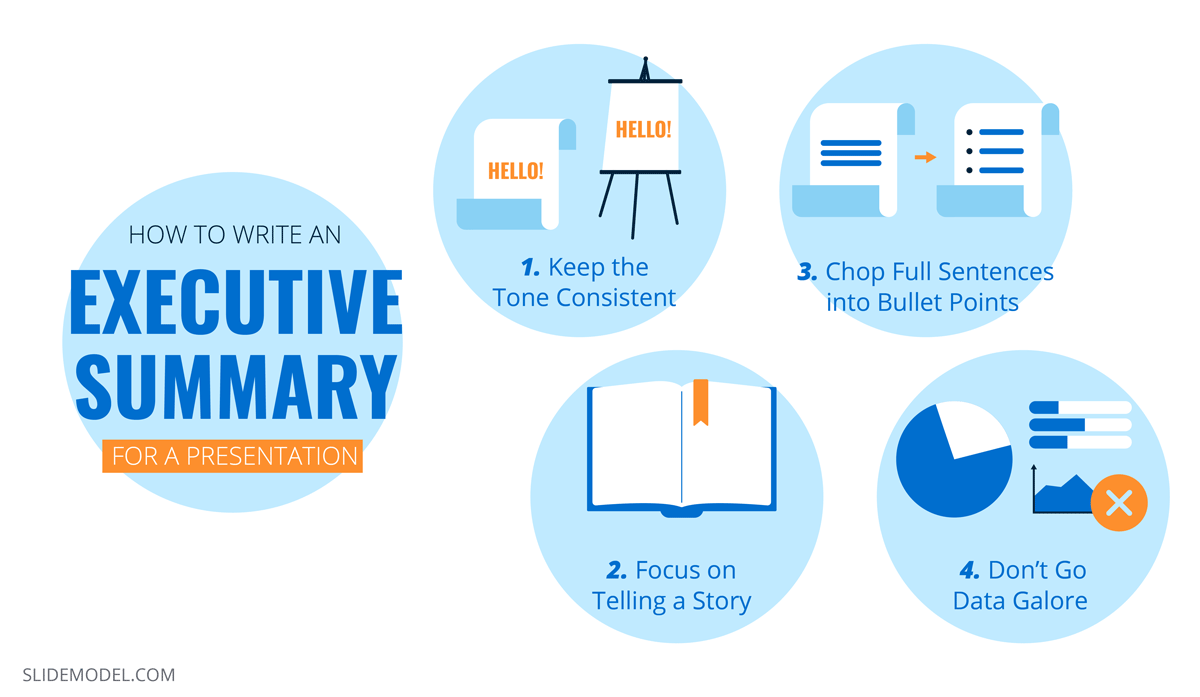
1. Start with a Problem Statement
Think of the first paragraph as if of an opening slide for a presentation : you need to make a big compelling statement that immediately communicates your agenda. Set the scene for the reader. There are several ways to do so:
- Answer the “why now” question in the opening paragraph
- Address the urgency of the matter
- Highlight the importance of the discussed issue
Alternatively, you can also go for a more traditional opening and explain the background of the research and discussed issue. For example, if you have conducted a go-to-market strategy evaluation for the team you can start by saying that “This report analyzed online furniture brand performance in 5 target EMEA markets in terms of market share, local brand recall, brand preference, and estimated online sales volumes.” Afterward, briefly communicate the main aim of the report.
2. Present the Main Discussion Points
Next, flesh out what’s included in the scope of this report to properly manage the reader’s expectations. You can use the report’s section subheads as key discussion points or come up with snappier, more descriptive statements.
Here are several good writing practices to follow:
- Use bullet points and numbered lists to break down text blocks.
- Quantify the biggest findings when possible. Style them as “call-outs”.
- Mention the limitations of your report and what it does not account for.
- Discuss the used research methods and data sources.
Finally, summarize the findings in one concluding paragraph if you have space. Or style it as a featured quote to draw the reader’s eye towards crucial information.
3. List the Recommendations or Next Steps
The bottom part of the page, around 100-150 words should be allocated towards underlining the results, conclusions, and follow-up action expected from the reader. Summarize what you have found during the course of your research. Mention if you have identified any specific type of solution or a type of recommended action.
Once you are done, send over an executive summary draft to a team member who hasn’t seen the complete report. Ask for their feedback. Can they tell what the report content is after reading the summary? Does the summary intrigue them? Is it descriptive enough for someone without any other context into the matter? Use the critique to further improve the document.

How to Prepare an Executive Summary Presentation
High chances are that you’ll also be asked to write the copy for the executive summary presentation, and perhaps even design it too. So let’s get you up to speed on this aspect as well.
How Does an Executive Summary Slide Look Like in PPT?
There’s no ultimate look for an executive summary slide as most presenters customize it to best reflect the content they’d want to showcase. But if you want some universal example, here’s our executive summary slide template :
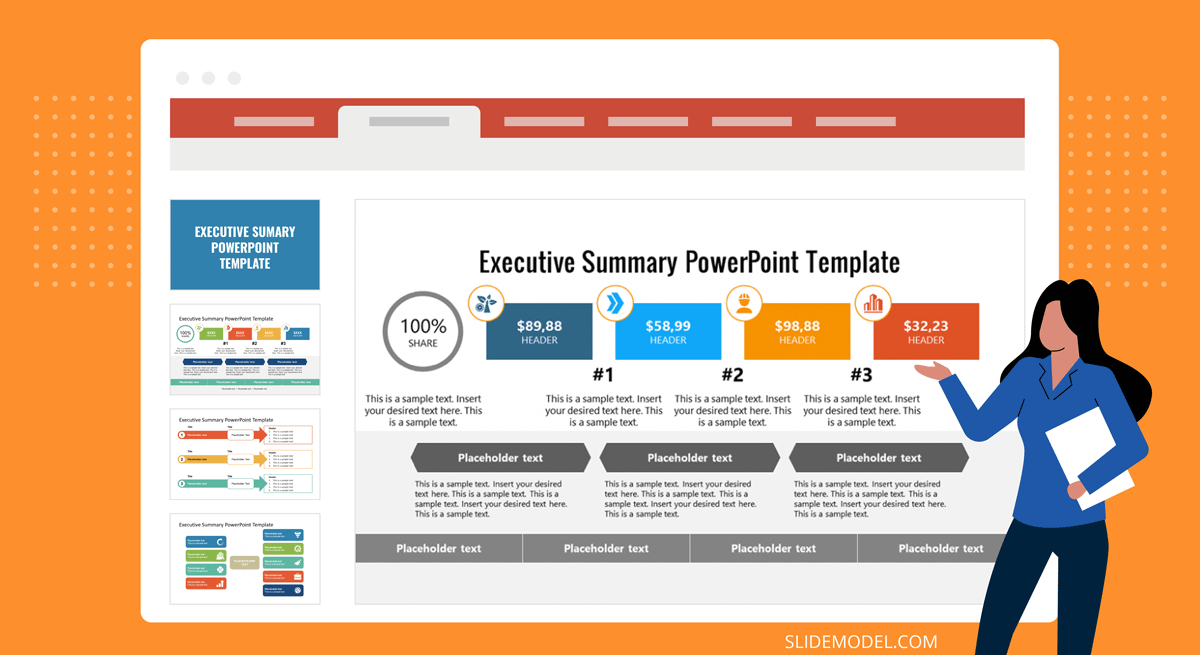
You can build an entire slide deck tailored for an executive summary or business presentation by using our AI Presentation Maker . Fill the topic, analyze & edit the proposed outline, and select a design. That’s it! You can create an engaging executive summary slide deck with any number of slides.
What Makes a Good Executive Summary Slide?
A good executive summary slide visually communicates all the important information from the full report. Typically, it’s an even more condensed version of the written executive summary, prefacing the document. Thus to create a good executive summary slide, be prepared to do some ruthless editing.
Include a condensed version of the:
- Main problem statement or report agenda
- Key findings. Prioritize quantifiable ones
- Recommendations and next steps.
Also, you will need some PowerPoint design mastery to ensure that an executive summary in your PowerPoint presentation looks compelling, but not cluttered. Prioritize white space. Here is where a good executive summary template can make your life easier. To minimize the number of texts, add icons and other simple visualizations. Trim headers and subheads to give the slide even more breathing room.
For those looking to create an engaging and visually appealing presentation, consider utilizing professional presentation templates to enhance the visuals of your executive summary slide. These templates are specifically designed to help presenters convey their message effectively and with style, ensuring that your audience remains captivated and fully understands the key points of your report.
How to Write an Executive Summary for a Presentation
Most likely you won’t need to write a brand new copy for this slide, but rather adapt the text at hand. That already makes your job a lot easier when summarizing a presentation into an executive summary slide. Still, you don’t want to mess anything up. So stick with the executive summary template you’ve chosen and fill in the gaps using our tips.
1. Keep the Tone Consistent
Use the same tone of voice and word choices in your slide deck as you’ve adopted in the report. If the tone of your presentation speech differs too much with terms used on the slide and in the report copy, some audience members may get confused, and then disengaged.
2. Focus on Telling a Story
Stakeholders will have the extra time to read the “dry” report. During the presentation, your main goal is to draw their attention to the most important issue, showcase the value-packed inside the report, and make them eager to learn more by actually flipping the full copy afterward.
3. Chop Full Sentences into Bullet Points
Go snappy and present information in a snackable manner. Remember, our brain can only keep 3-5 items at once in the working memory. So you shouldn’t try to overload the audience with a long list of “very important points” in one sitting.
Also, per a recent presentation survey, among the 3 things that annoy audiences most about presentations are slides that include full sentences of text. So, when working on your presentation summary slide, trim those lengthy texts and move on some of the other points to separate slides.
4. Don’t Go Data Galore
Including numbers and data visualizations is a great way to present your executive summary. However, overloading your data slides with data nuggets makes your presentation less impactful.
As presentation design expert Nancy Duarte explains :
“Data slides aren’t really about the data. They’re about the meaning of the data. It’s up to you to make that meaning clear before you click away. Otherwise, the audience won’t process — let alone buy — your argument.”
It’s a good idea to spotlight 3 main data points on your executive summary slide. Then use some extra minutes to comment on why you’ve chosen to present these.
To Conclude
An executive summary is the first page and/or slide a reader will see. That’s why the stakes are high to make it look just right. Granted, that shouldn’t be an issue. Since you now know how to write, design, and present a compelling executive summary to others!
1. Project Summary PowerPoint Template
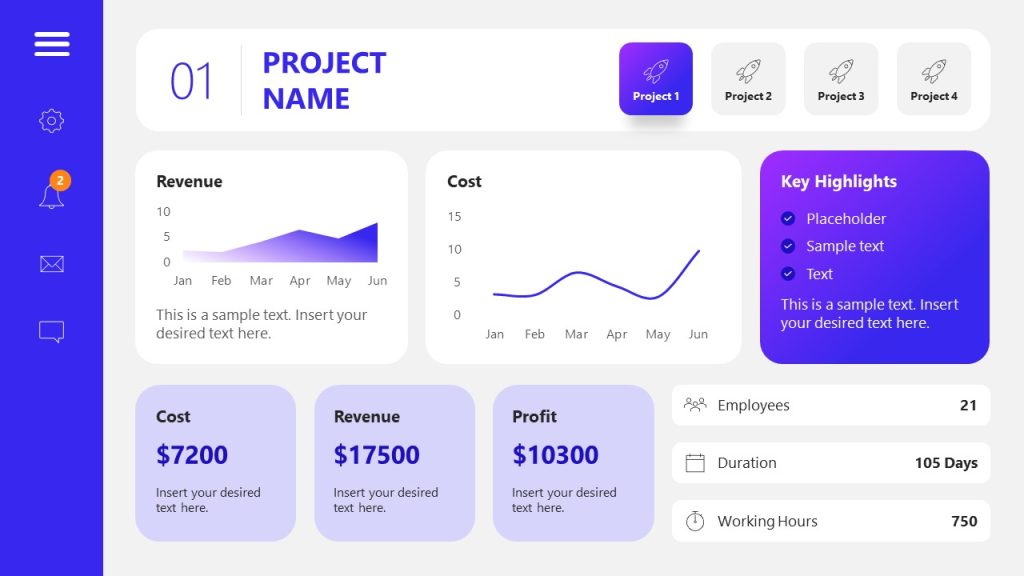
Use This Template
2. Simple Executive Summary Slide Template for PowerPoint
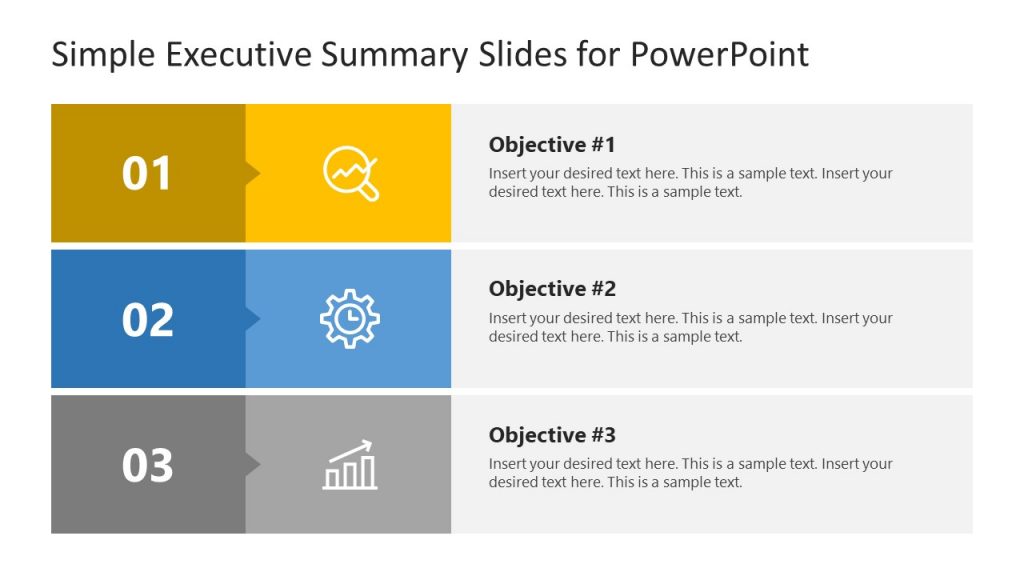

3. One Page Strategy Summary PowerPoint Template
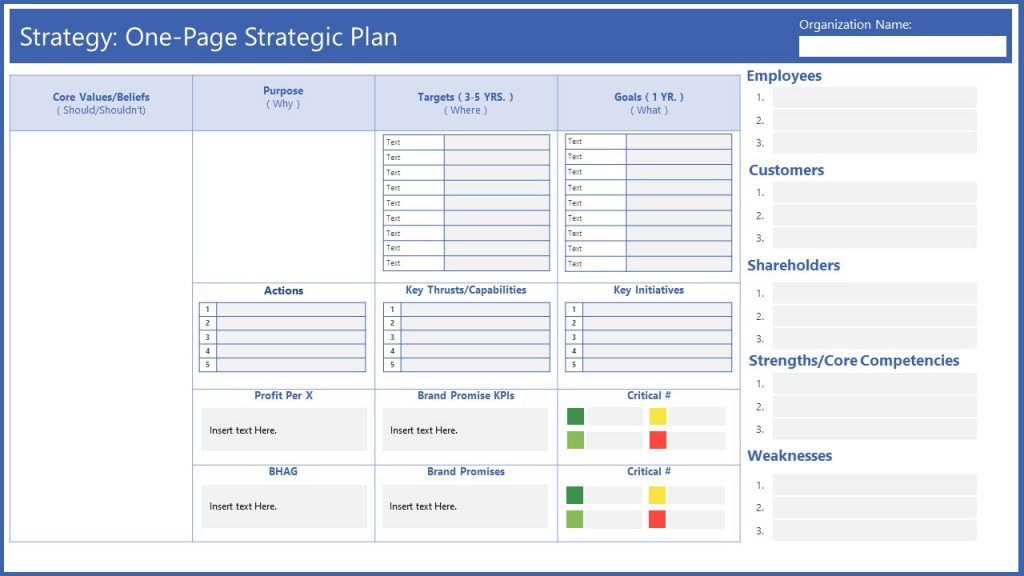
4. Executive Summary PowerPoint Template
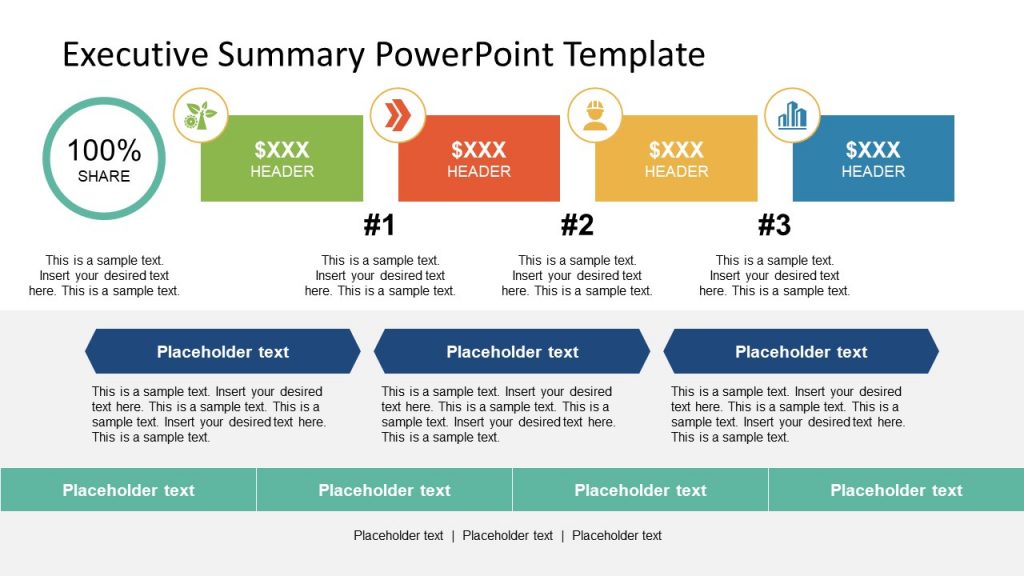
5. Executive Business PowerPoint Template

Like this article? Please share
Executive Reports, Executive Summary Filed under Business
Related Articles
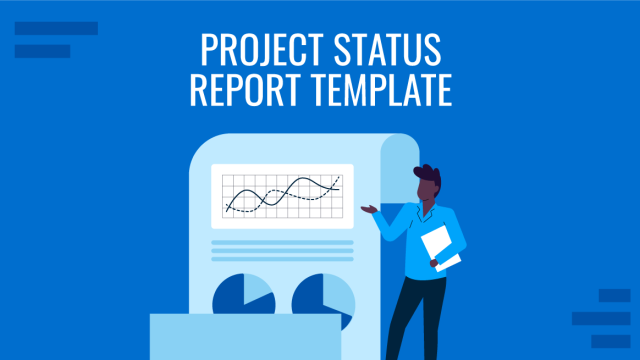
Filed under Business • August 31st, 2023
How to Build a Project Status Report Template: Complete Guide
Project status reports provide timely insights into project progress. Here are practical tips and a one-pager template for concise updates.
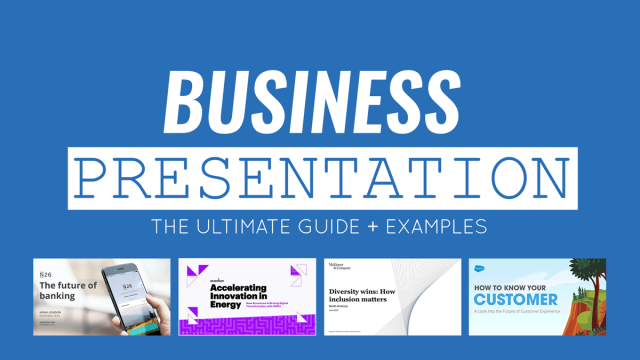
Filed under Business • October 25th, 2022
Business Presentation: The Ultimate Guide to Making Powerful Presentations (+ Examples)
A business presentation is a purpose-led summary of key information about your company’s plans, products, or practices, designed for either internal or external audiences. This guide teaches you how to design and deliver excellent business presentations. Plus, breaks down some best practices from business presentation examples by popular companies.
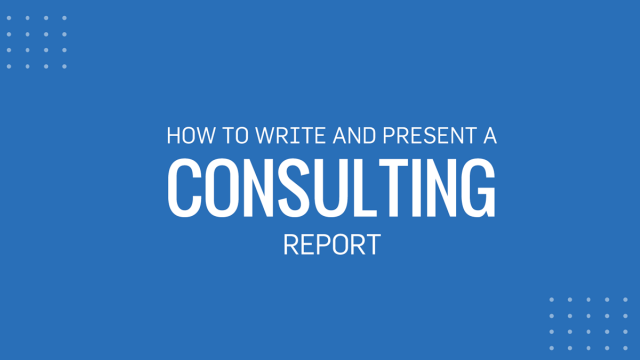
Filed under Business • October 7th, 2022
Consulting Report: How to Write and Present One
Consultants have many tools of the trade at their disposal: Frameworks, analytics dashboards, data science models, and more. Yet many clients still expect to receive a narrated consulting report. So how do you write one? This guide will show you.
Leave a Reply
Got any suggestions?
We want to hear from you! Send us a message and help improve Slidesgo
Top searches
Trending searches

solar eclipse
25 templates

12 templates
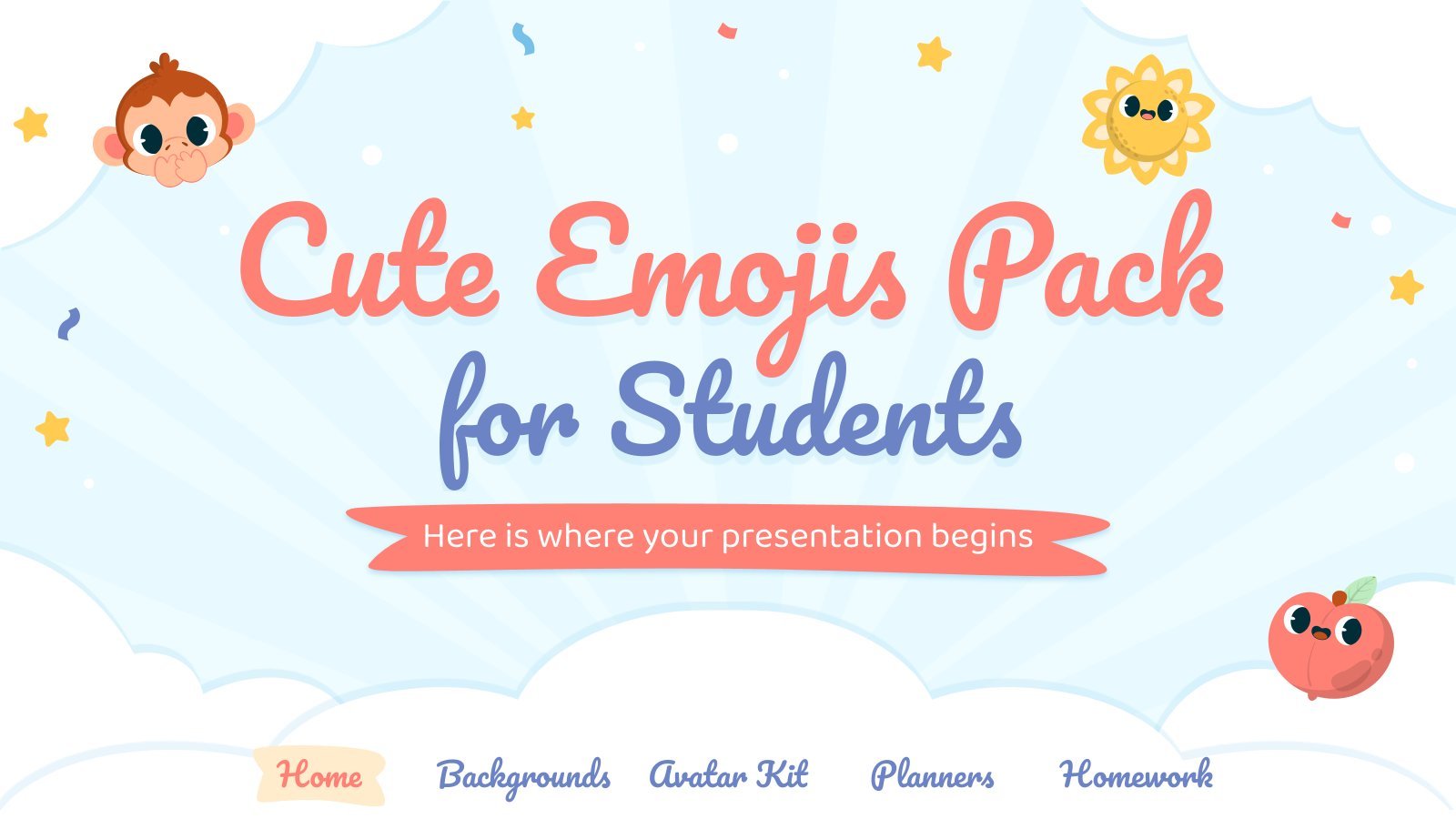
sunday school
65 templates
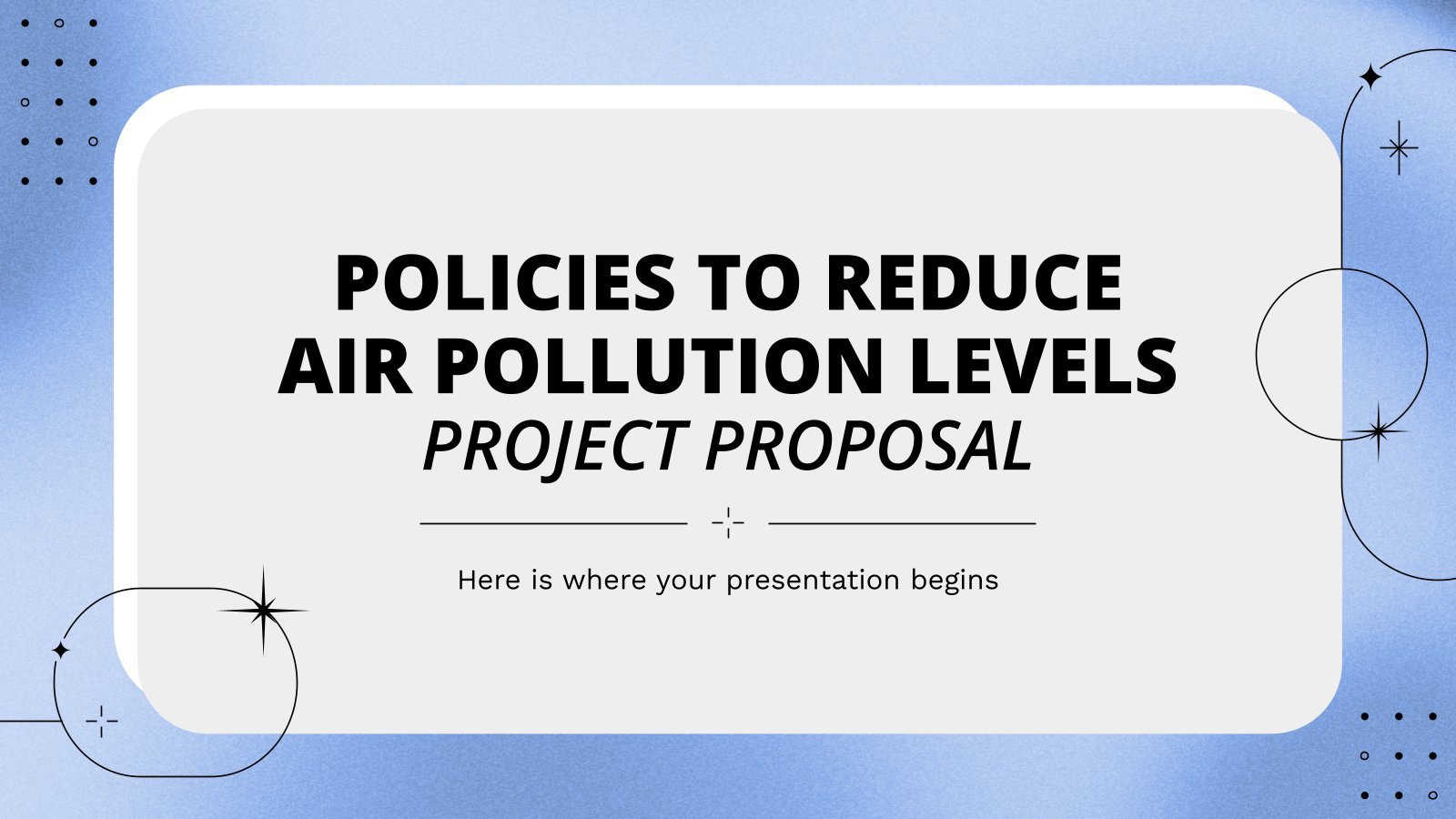
30 templates

public health
35 templates
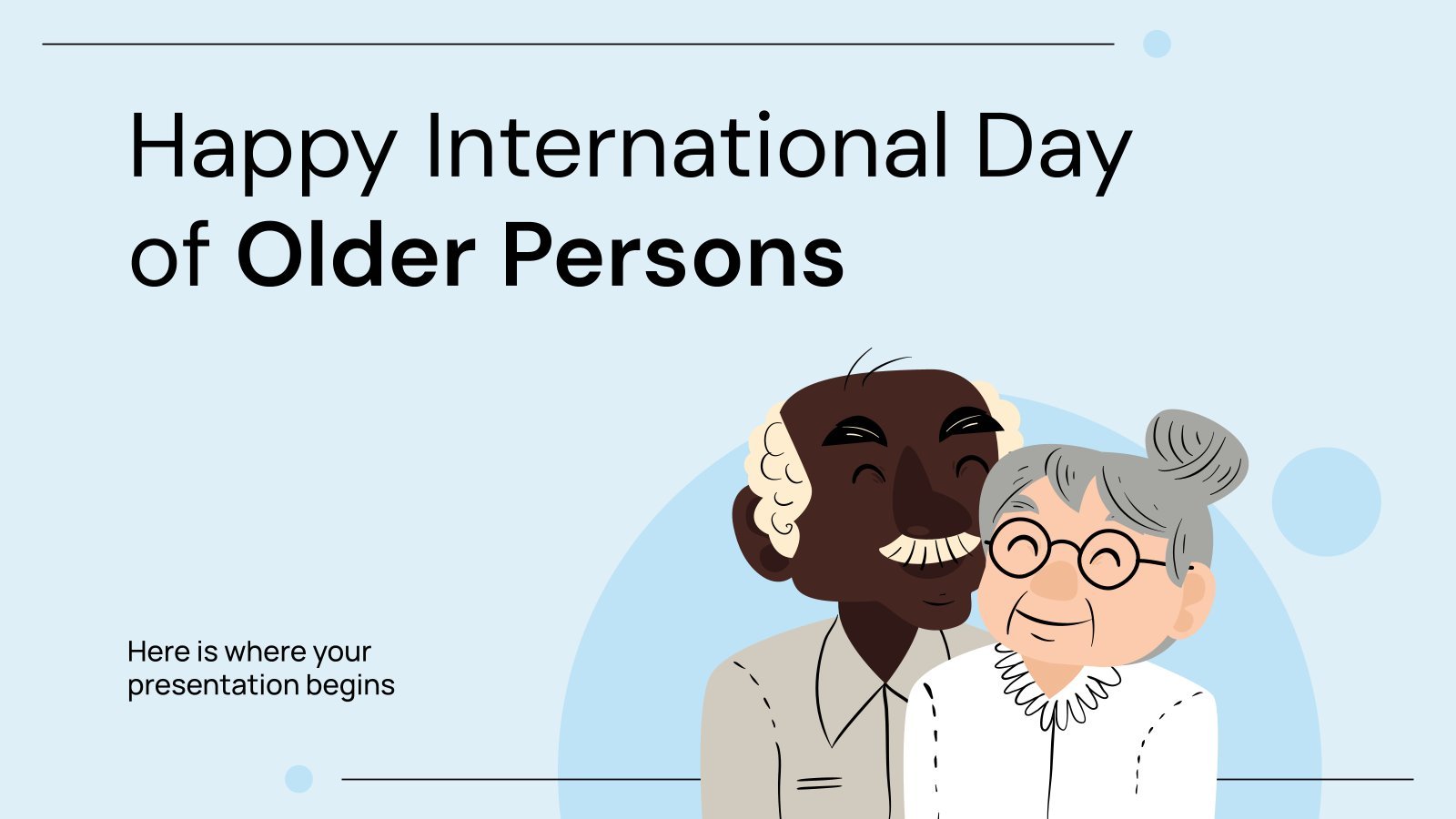
elderly people
7 templates
Project Summary
Project summary presentation, premium google slides theme and powerpoint template.
Is your company embarking on their biggest journey ever? Perhaps the most ambitious project in their history? We're sure it will be very difficult to be aware of all the details, including the smaller ones. What you really need now is a summary! To start working on it right away, you just need the help of this editable template. It's great for creating presentations, and this one will remind you of a notebook, kind of. It has markers on the right side, to which you could add hyperlinks if you wish to jump to a certain part of the slideshow.
Features of this template
- 100% editable and easy to modify
- 35 different slides to impress your audience
- Contains easy-to-edit graphics such as graphs, maps, tables, timelines and mockups
- Includes 500+ icons and Flaticon’s extension for customizing your slides
- Designed to be used in Google Slides and Microsoft PowerPoint
- 16:9 widescreen format suitable for all types of screens
- Includes information about fonts, colors, and credits of the resources used
What are the benefits of having a Premium account?
What Premium plans do you have?
What can I do to have unlimited downloads?
Don’t want to attribute Slidesgo?
Gain access to over 22300 templates & presentations with premium from 1.67€/month.
Are you already Premium? Log in
Related posts on our blog

How to Add, Duplicate, Move, Delete or Hide Slides in Google Slides

How to Change Layouts in PowerPoint

How to Change the Slide Size in Google Slides
Related presentations.

Premium template
Unlock this template and gain unlimited access
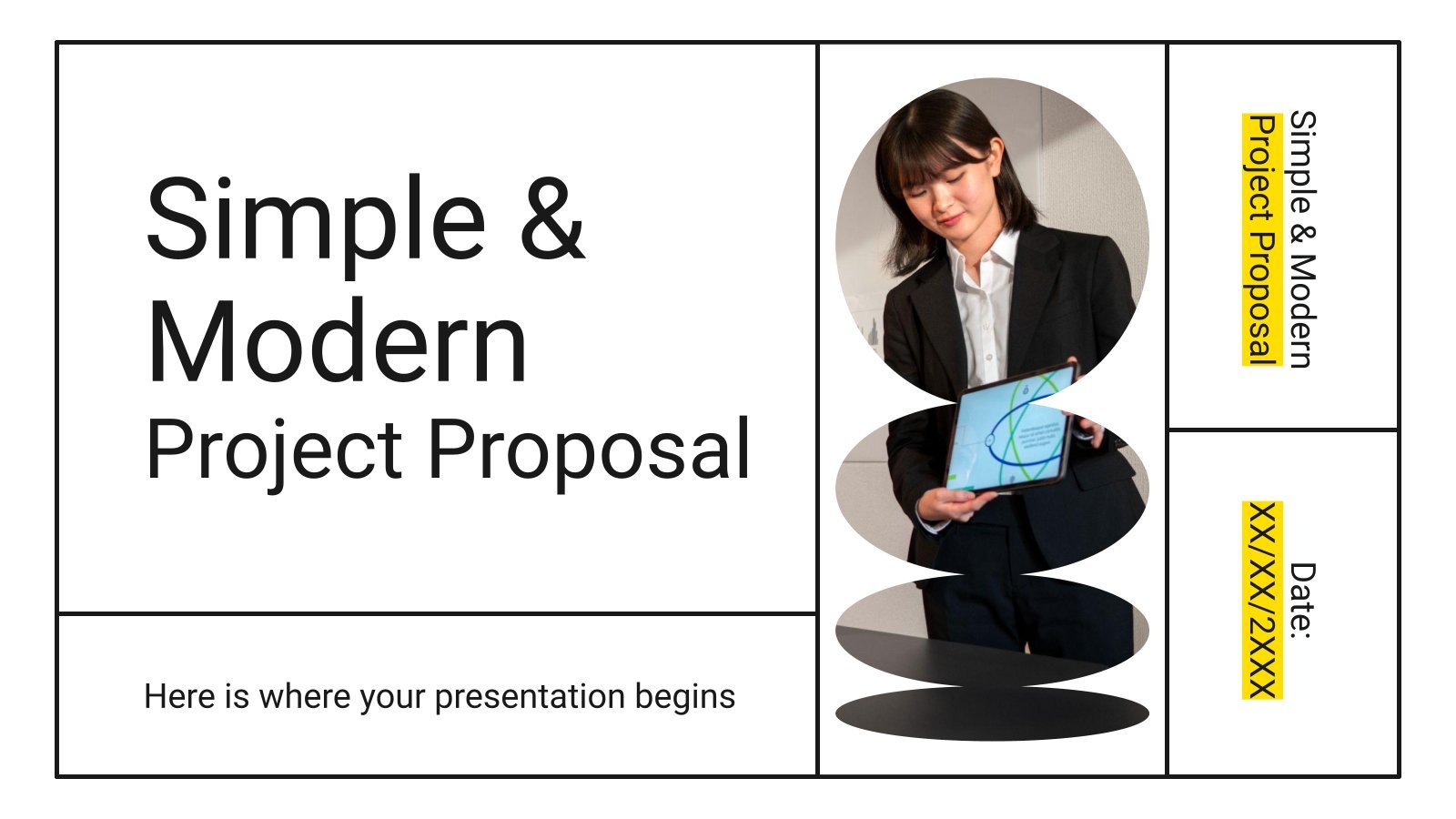
Register for free and start editing online
Looking to publish? Meet your dream editor, designer and marketer on Reedsy.
Find the perfect editor for your next book
1 million authors trust the professionals on Reedsy. Come meet them.
Blog • Understanding Publishing
Posted on Sep 12, 2018
How to Write an Incredible Synopsis in 4 Simple Steps
Your novel is fully written, edited, and polished to perfection — you’re ready to pitch it to agents! But you’re missing a critical piece of persuasion: the synopsis. Even after putting together your entire book, you may have no idea how to write one, or even how to approach it.
Luckily, we’ve got answers for you. Read on for our best tips on writing a synopsis that’s clear, concise, captivating… and may even lead to an all-out agent battle over your novel!
What is a synopsis?
A synopsis is a summary of a book that familiarizes the reader with the plot and how it unfolds. Although these kinds of summaries also appear on the pages of school book reports and Wikipedia, this guide will focus on constructing one that you can send out to agents (and eventually publishers).
Your novel synopsis should achieve two things: firstly, it should convey the contents of your book, and secondly, it should be intriguing!
While you don’t need to pull out all the marketing stops at this stage, you should have a brief hook at the beginning and a sense of urgency underlying the text that will keep your reader going. It should make potential agents want to devour your whole manuscript — even though they’ll already know what happens.
While writing your synopsis, make sure that it includes:
- A complete narrative arc
- Your own voice and unique elements of your story
- The ending or resolution ( unlike in a blurb )
As for the ideal length for this piece, it varies from project to project. Some authors recommend keeping it to 500 words, while others might write thousands. However, the standard range is about one to two single-spaced pages (or two to five double-spaced pages). And if you're interested in knowing how to format the whole of your manuscript for submission, we recommend downloading this manuscript format template.

FREE RESOURCE
Manuscript Format Template
Get your manuscript ready for submission to agents and publishers.
You may also want to have an additional “brief” summary prepared for agents who specifically request a single page or less. Remember: as hard as it will be to distill all your hard work into that minimal space, it’s crucial to keep your synopsis digestible and agent-friendly.
How to write a novel synopsis in 4 steps

1. Get the basics down first
When it comes to writing a synopsis, substance is the name of the game. No matter how nicely you dress it up, an agent will disregard any piece that doesn’t demonstrate a fully fleshed out plot and strong narrative arc. So it stands to reason that as you begin writing, you should focus on the fundamentals.
Start with major plot points
Naturally, you want agents to be aware of your story's major plot points . So the best way to start summarizing your story is to create a list of those plot points, including:
- The inciting incident — what sparks the central conflict of your story?
- The events of the rising action — what happens in the interlude between the inciting incident and the climax, and how does this build tension?
- The height of the action, or climax , of your story — this one is the most important, as it should be the most exciting part of your book!
- The resolution or ending — again, unlike a blurb, a synopsis doesn’t need to dangle the carrot of an unknown ending to the reader; you can and should reveal your story’s ending here, as this brings the plot and narrative arc to a close.
Listing these points effectively maps out the action and arc of your story, which will enable the reader to easily follow it from beginning to end.
Include character motivations
The key here is not to get too deep into characterization, since you don’t have much room to elaborate. Instead, simply emphasize character motivations at the beginning and end of your synopsis — first as justification for the inciting incident, then again to bring home the resolution. For example:
Beginning: “Sally has spent the past twenty years wondering who her birth parents are [motivation]. When a mysterious man offers her the chance to find them, she spontaneously buys a ticket to Florence to begin her journey [inciting action].”
Ending: “She returns to the US with the man who was her father all along [resolution], safe in the knowledge that she’ll never have to wonder about him again [restated motivation].”
Also note how the text here is written in third person, present tense, as it should be regardless of the tense or POV of your actual book. Writing a synopsis in first or second person doesn’t really work because it’s not meant to be narrated — just summarized. Basically, the present tense works to engage the reader while the third person allows the story to be told smoothly.
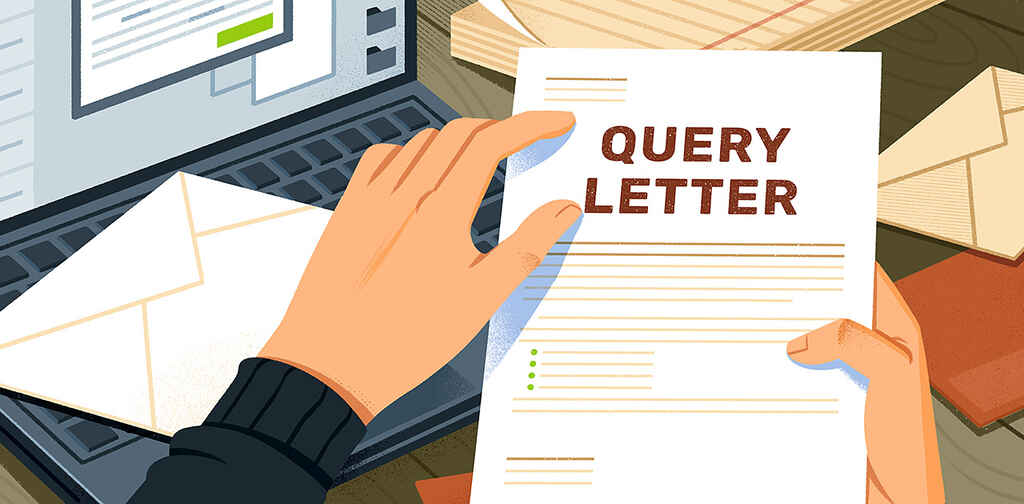
Query Submissions Tracker
Stay organized on your journey to find the right agent or publisher.
2. Highlight what’s unique
Now it’s time to spice up your synopsis by highlighting the elements that make it unique. Agents need to know what’s so special about your book in particular — and moreover, is it special enough to get readers to pick it up? Below are some features you might employ to grab an agent’s attention and assure them of your book’s appeal.
Your writing voice is an essential tool here: it conveys your novel’s tone and is one of the most important factors in making your work stand out. However, it’s also one of the most difficult elements to evoke in such a small amount of space.
The best way to capture voice in a synopsis is through extremely deliberate word choice and sentence structure. So if you were Jane Austen, you’d use clever words to magnify your wit: “When Darcy proposes to her apropos of nothing, Elizabeth has the quite understandable reaction of rejecting him.” You may not be able to use all the elaborate prose of your novel, but your synopsis should still reflect its overall feeling.
Plot twists
Even though they’re one of the oldest tricks in the book, readers will never tire of juicy plot twists. If your novel contains one or more of these twists, especially at the climax, make sure your synopsis accentuates it. But don’t hint too much at the twist, as this will make it seem more dramatic when it comes; a couple of words in the intro will suffice as foreshadowing.
For instance, if you were writing a summary of Gone Girl , you might open with “Nick Dunne wakes up one morning to find that his wife, Amy, has apparently disappeared. ” This implies that she may not be as “gone” as we think she is, setting the stage for the later reveal.

Point of view
Another aspect that might set your book apart is a distinctive point of view . Since you’ll be giving your synopsis in third person, you can limit this inclusion to an introductory sentence: “This book is narrated from the point of view of a mouse.”
Although this strategy works best for books with a highly unusual point of view (such as The Book Thief by Markus Zusak, in which the story is told by Death), it can also be very helpful to remember for seemingly bog-standard narrators. If one of your characters narrates in first person, make sure to address their individual narrative quirks as well as any biases or limitations; highlighting an unreliable narrator can really add to your novel’s intrigue!
3. Edit for clarity and excess
Don’t shroud your synopsis in mystery; this is very frustrating to agents who just want to know what happens in your book! With that in mind, after you’ve written the bulk of your summary, it’s time to edit for clarity. You also may have to delete some text, so you can get it right in that couple-page sweet spot.
Editing for clarity
The paramount rule of synopses is a real doozy: tell, don’t show. It’s the opposite of that classic adage that writers have heard their whole lives, and it’s exactly what you need to write a successful synopsis.
As you return to what you’ve written, scan for sentences that are vague or unclear, especially toward the beginning. Many writers fall into the trap of trying to hook agents by opening with a sentence akin to the first murky line of a literary novel. Again, though you do want your intro to be intriguing, it has to cut to the chase pretty quickly.
When it comes to opening a synopsis, you need to think like Tolkien, not Tolstoy. “In a hole in the ground there lived a hobbit.” Crisp, clear, and to the point: one of the very few times you should tell, rather than show .
Editing excess words
If your synopsis is longer than a couple of pages at this point, you need make some serious cutbacks. Read through what you have, scrutinizing every sentence and word, even if you think you’ve chosen them carefully. Reduce any run-on sentences or subordinate clauses that unnecessarily lengthen your piece.
Finally, eliminate irrelevant details — anything that doesn’t lead to the next plot point or directly contribute to your voice or other distinctive elements. It’s unlikely you’ll have included any of these in the first place, but just in case they’ve slipped through, cut them. Save the frills for your book; remember, your synopsis is all about substance .
4. Make sure it flows
By the time it’s finished, your synopsis should read like a summary from an excellent book review — or at the very least SparkNotes or Shmoop. This means not only clearly and concisely hitting every important point, but also reading in a smooth manner, placing just the right amount of emphasis on the critical moments and unique aspects we’ve discussed.
Get test readers
A great way to ensure that your synopsis is paced precisely and flows well is to give it to test readers, either someone you know or a professional editor . You’ve spent way too much time with these words to be objective about them, so pay attention to what other people suggest: possible word substitutions, transitions, and which details to emphasize versus delete.
Use professional synopses as models
You don’t want to look at examples of other synopses too soon, otherwise yours will come out sounding formulaic and stale. That said, professional synopses can be a very valuable tool for refining toward the end of the process! Compare and contrast them to the synopsis you’ve written, and adapt any techniques or turns of phrase you feel would enhance it.
Here’s an example of a strong (albeit brief) synopsis of Great Expectations by Charles Dickens , courtesy of the Oxford Companion to English Literature:
Phillip Pirrip, more commonly known as “Pip,” has been brought up by his tyrannical sister, wife of the gentle Joe Gargery. He is introduced to the house of Miss Havisham who, half-crazed by the desertion of her lover on her bridal night, has brought up the girl Estella to use her beauty as a means of torturing men. Pip falls in love with Estella and aspires to become a gentleman.
Money and expectations of more wealth come to him from a mysterious source, which he believes to be Miss Havisham. He goes to London, and in his new mode of life meanly abandons the devoted Joe Gargery, a humble connection of whom he is now ashamed.
Misfortunes come upon him. His benefactor proves to be an escaped convict, Abel Magwich, whom he as a boy had helped. Pip’s great expectations fade away and he is penniless. Estella meanwhile marries his sulky enemy Bentley Drummle, by whom she is cruelly ill treated.
In the end, taught by adversity, Pip returns to Joe Gargery and honest labor. He and Estella, who has also learnt her lesson, are finally reunited.

This synopsis works well because it includes:
- The inciting incident (Pip moving in with Miss Havisham), the rising action (him being in London), the climax (returning to Joe Gargery), and the resolution (reuniting with Estella)
- Character motivations (Miss Havisham wants to punish all men because her fiancé betrayed her; Pip wants to become a gentleman so Estella will fall in love with him)
- A plot twist (Pip’s benefactor being a criminal — whom he knows from his childhood!)
- Distinctive voice (formal yet engaging, doesn’t detract from the plot) and smoothly written style (events are chronological and progress quickly)
Your synopsis is one of the biggest deciding factors in whether an agent wants to see more from you or not. No matter how chipper your query letter , the bottom line is that this summary tells agents (and later publishers) what they really need to know: what your book is about, what makes it unique, and most importantly, if they can sell it.

FREE COURSE
How to Write a Query Letter
Learn to grab agents’ attention with 10 five-minute lessons.
That’s why it’s vital that you make your synopsis airtight. Fortunately, if you’ve followed these steps, yours will be chock full of plot details with a touch of your own special writing sauce: a synopsis that any agent (hopefully) won’t be able to resist.
Many thanks to Reedsy editors (and former agents) Sam Brody and Rachel Stout for consulting on this piece!
Do you have any tips for writing an irresistible synopsis? Leave them in the comments below!
2 responses
Elizabeth Westra says:
12/09/2018 – 22:10
This looks interesting, and I will read every word, but this would be different for a picture book. You only get one page to query for many children's books.
Dorothy Potter Snyder says:
14/10/2018 – 20:11
I am curious if anyone has ideas on how translators can write a synopsis for agents / publishers of works in translation? Might there be something about why this author is important in his/her country of origin and literary tradition? Which authors more known to English language readers might relate to this author (they've never heard of before)?
Comments are currently closed.
Continue reading
Recommended posts from the Reedsy Blog

How to Publish a Book For Free: The 7 Best Sites
If you want to publish your book without spending a single dime, check out this handy list of 7 free self-publishing services.
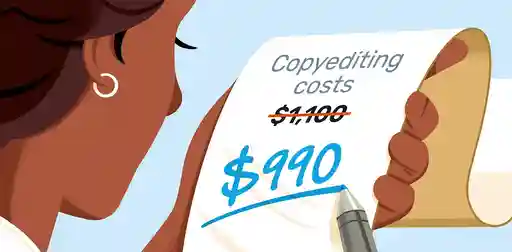
5 Ways to Save on Your Self-Publishing Budget
If you want to self-publish a book without breaking the bank, here are 5 tips to ensure you still get the best result possible.

30 Great Book Dedication Examples to Inspire Your Own
A list of 30 of the best book dedications in the business, that'll have you crying, laughing, and crying laughing.

Expository Writing: The Craft of Sharing Information
Expository writing is a fundamental part of how we learn and make sense of the world. Learn all about it in this post.

Additional Reviews: Query Critique December 2024
Additional critiques from Reedsy's December 2024 query letter session.

How to Make Money by Writing Books: 8 Tips for Success
If you want to be an author who makes a living from books, here are eight tips to help you make money as a writer.
Join a community of over 1 million authors
Reedsy is more than just a blog. Become a member today to discover how we can help you publish a beautiful book.
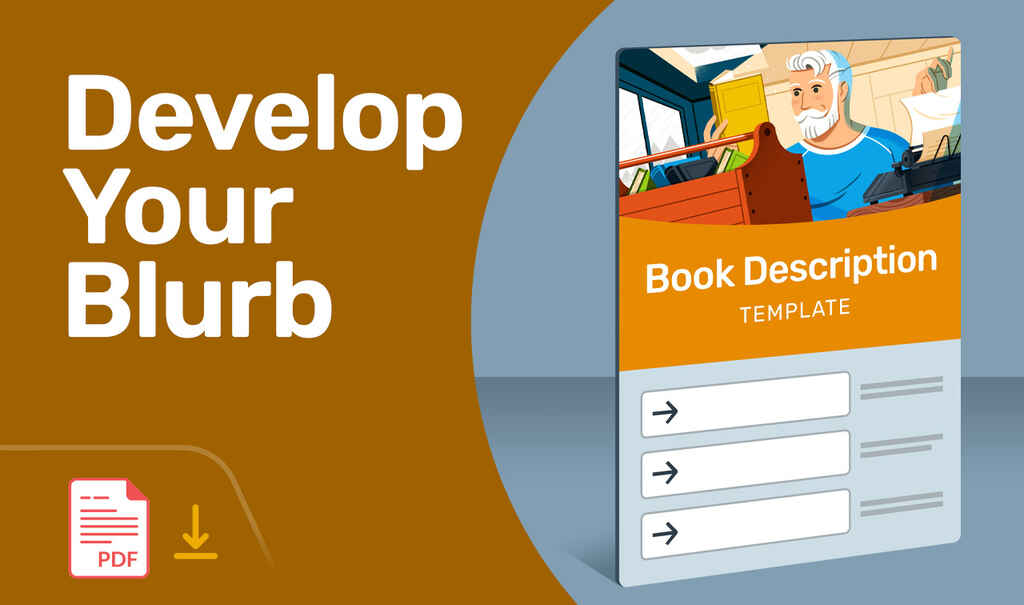
Book Description Template
Use our template to write a hook and synopsis that convince readers to pick up your book.

1 million authors trust the professionals on Reedsy. Come meet them.
Enter your email or get started with a social account:

Researched by Consultants from Top-Tier Management Companies

Powerpoint Templates
Icon Bundle
Kpi Dashboard
Professional
Business Plans
Swot Analysis
Gantt Chart
Business Proposal
Marketing Plan
Project Management
Business Case
Business Model
Cyber Security
Business PPT
Digital Marketing
Digital Transformation
Human Resources
Product Management
Artificial Intelligence
Company Profile
Acknowledgement PPT
PPT Presentation
Reports Brochures
One Page Pitch
Interview PPT
All Categories
Top 10 Business Summary Templates with Samples and Examples
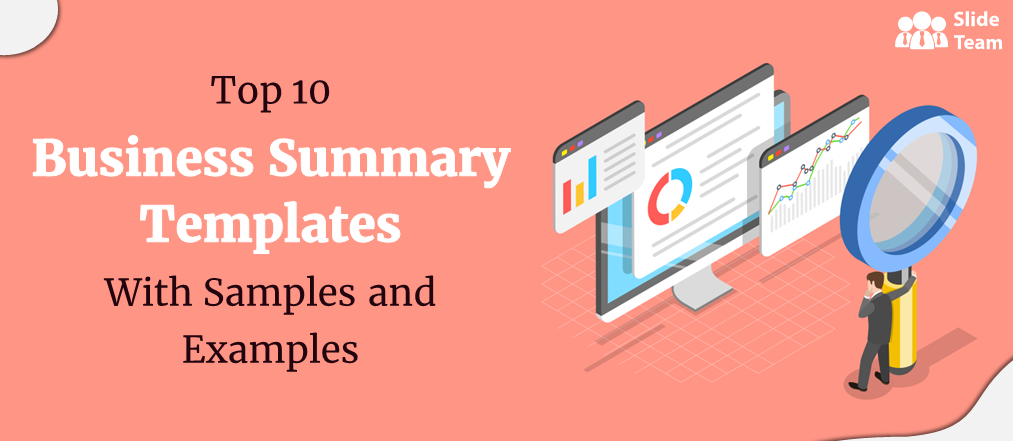
Dikshita Sharma
How do we decide which movie to watch and which novel to read? We watch the previews or go through summary at the back of the book to decide if this is worth your time. The same is true in businesses-----------Business summaries help investors, clients, and stakeholders choose if the organization is going to provide any value to them. No matter how brilliantly you have crafted and presented your business plan, it will be difficult for you to win investors, and later customers if you do not have a business summary.
Whether you are an entrepreneur looking for investors for your small business or the CEO of a large corporation, your business summary would be the Cliffs Notes of your business plan that will help you in long term growth.
Are you planning to start a company, but struggling with the management of financial resources? Explore our professionally curated finance-based PPT templates and easily track your finances.
Still stuck on thoughts like, what exactly is a business summary? Or do you really need one? If so, then say no to worries! You can write a great business summary - almost - without breaking a sweat. Continue reading this blog to clear your doubts, and creates templates for your business summary.
Business Summary: The Mirror of Your Business Plan
Whether you want to get funded from banks, venture capitalists, or angel investors your business summary is the first thing someone reads to form an opinion of your business. It is not an introduction to your plan, but a highlight reel. In short, a business summary is the place where you put your best foot forward.
The fate of your business plan, whether it will be read or pushed aside solely depends on how good your business summary is. Therefore, the goal is to provide information that makes the reader curious to dig in and read the specifics of a business plan.
If you want to be a game changer and win your client’s attention, go through our top-class blog on executive summary and make your market position even more stable.
Looking to get started on your business summary? SlideTeam has come up with ready-made Top 10 Business Summary Templates to showcase your USP for investors to invest in your business and customers to trust in your brand without any second-thoughts. You may download these tailor-made templates for highlighting the core points of your business plan with confidence. Let’s delve deeper into these designs!
Template 1: Business Summary PowerPoint Slides Templates
Are you a marketing manager worried about how to share valuable insights with your audience? No worries! Showcase highlights, management summary, functional techniques, accomplishments, milestones, or vision/mission of your company in a condensed form with our business summary PPT template. This is a nine-stage process showcasing growth, science, money, diversity, economy, evaluation, power, of the company. What are you waiting for? Download this customizable slide at the earliest to get more audience engagement!
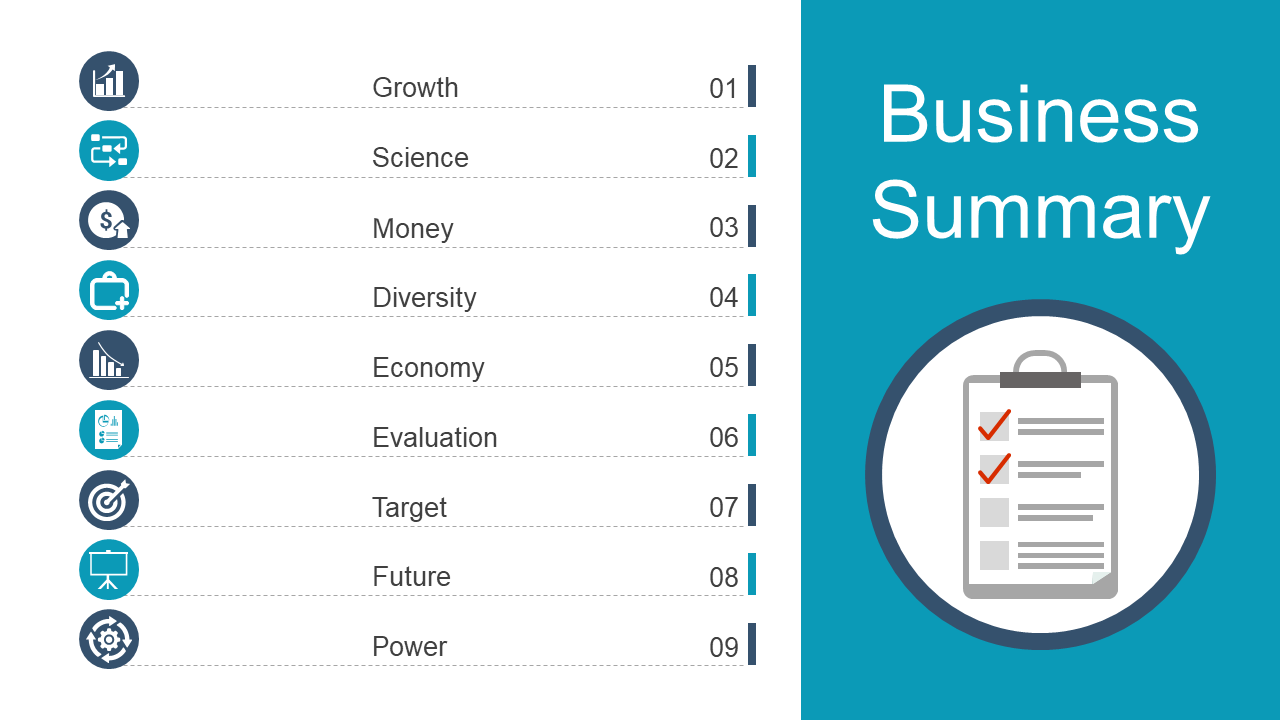
Download Now!
Template 2: Business Summary Strategy and Objectives PPT Slide
If you are looking for a template that gives a smooth and instant essence of the information to your viewers, then this visual-rich medium is for you. Highlight the important elements of your business plan and business summary with the help of this presentation template. Assimilate this slide to define business objectives, core competencies, market analysis, business strategy, and plans, SWOT analysis, risk assessment, management, etc. Without second thought, download this strategic planning PPT template and showcase your ingenuity to clients.
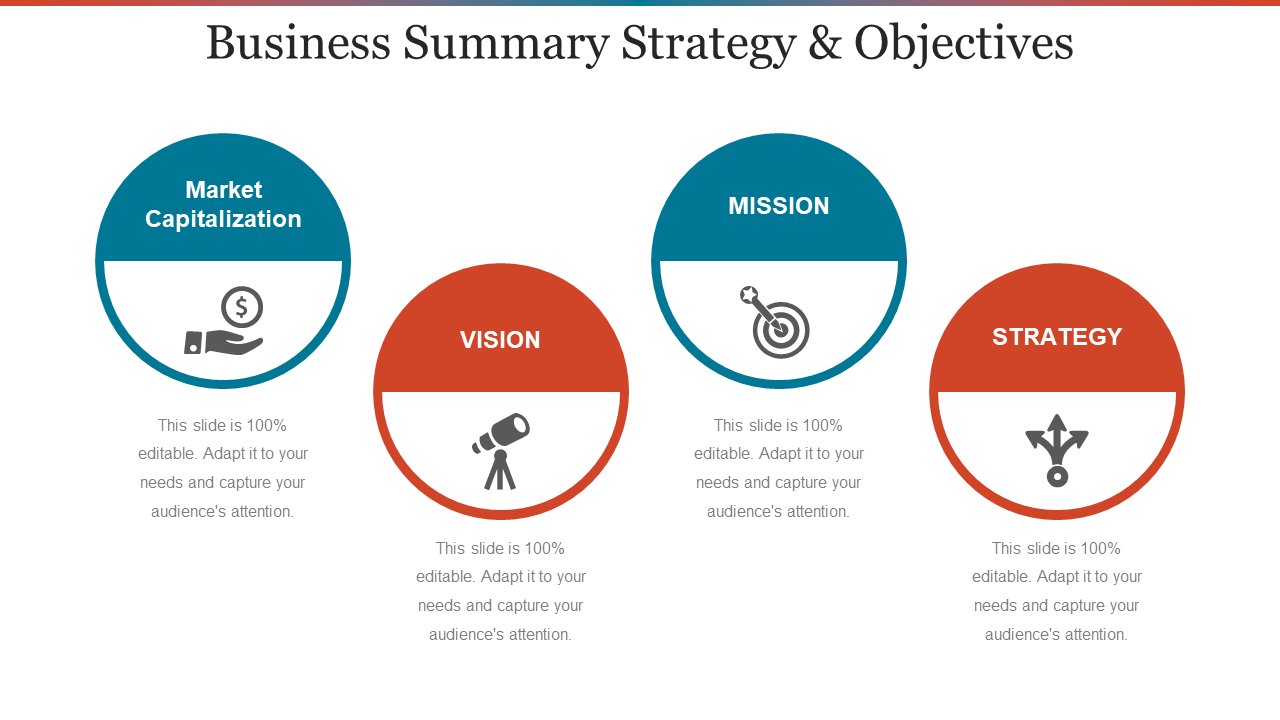
Template 3: Guide to International Expansion Strategy Business Summary PPT Template
Educate and entice your audience with the support of this well-curated PowerPoint Template. Dividing the process of expansion into five stages, this slide can be used to dispense information on your USP, expansion budget, goals, and market strategy. Customize the pre-constructed icons, colors, images, and text as per requirement. Grab this ready-made design now and leave your audience awestruck!
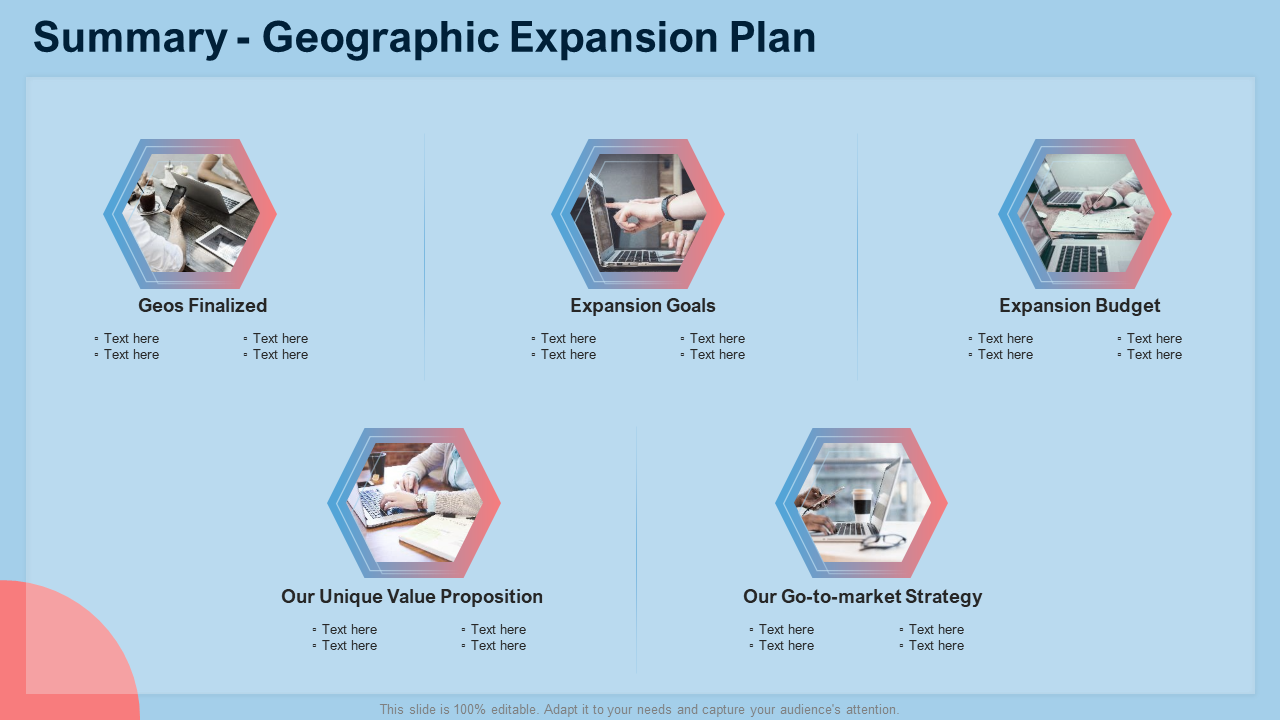
Template 4: Social Media Business Summary PPT Infographic Template
If you're looking for a creative, modern, and stylish social media PowerPoint Template for creating a business summary, then you have come to the right place. Deploy this tailor-made slide to display information on the number of customers, revenue generated, user growth, updates, etc. Outline a strategic and comprehensive business summary to showcase the growth and sales of the company using this actionable PPT template.
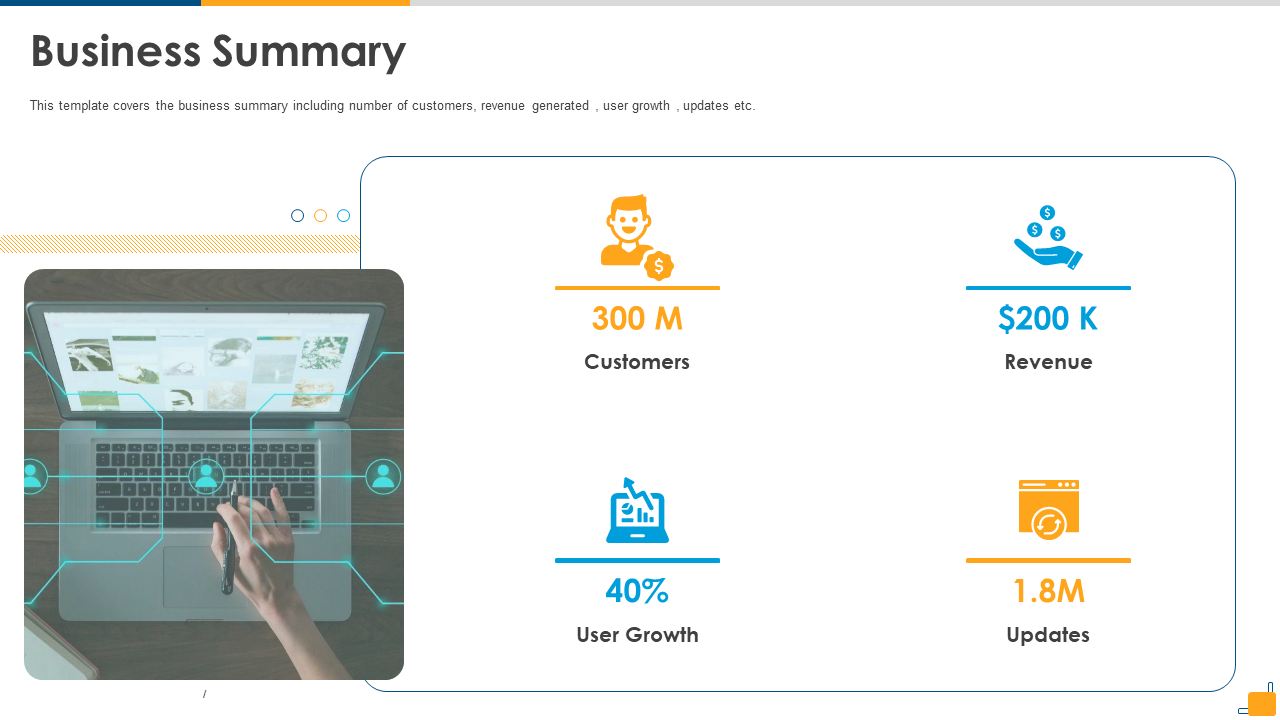
Template 5: Business Summary Social Media Pitch Deck Startup PPT Templates
Whether you have a small business or a large corporation with a well-established social media presence, this template fits your requirements to the T. Use this social media pitch deck startup template to create a professional and appealing business summary. Highlight the growth rate and traction with this ready-made PowerPoint slide to persuade investors to invest in your company. Facilitated with the unique color theme, graphics, and icons, download this slide to exhibit your business summary in a proper manner.
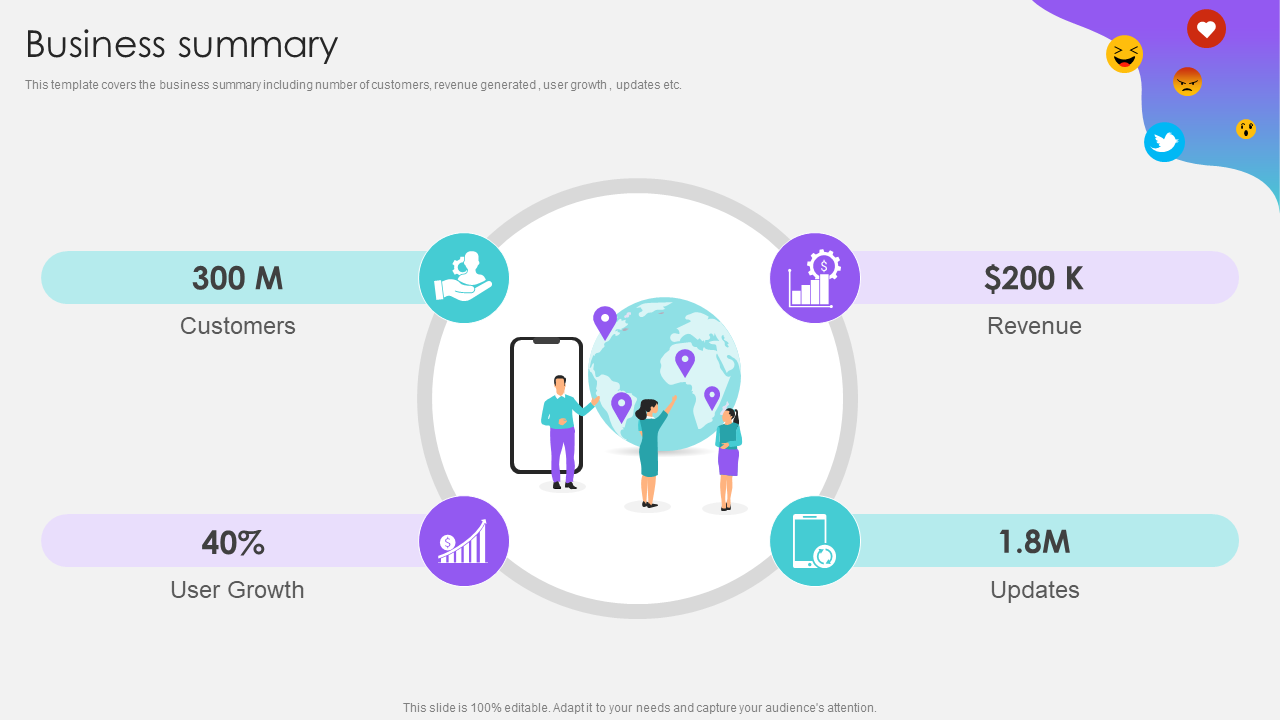
Template 6: Business Summary Advertising Agency Pitch PPT Slide
An advertising agency provides support in marketing, and promoting of the products or other operations of a company. If you want to showcase your products, check out our engaging and visually-stunning business summary advertising agency pitch deck. This presentation can be used as a guideline for creating an elaborate business summary. This ready-to-use PowerPoint Diagram will help you present your sales, revenue, financials, and more to encourage stakeholders to be a part of your company. Deploy this PowerPoint Diagram and outline an exclusive business summary to scale up your organization. Grab it now!
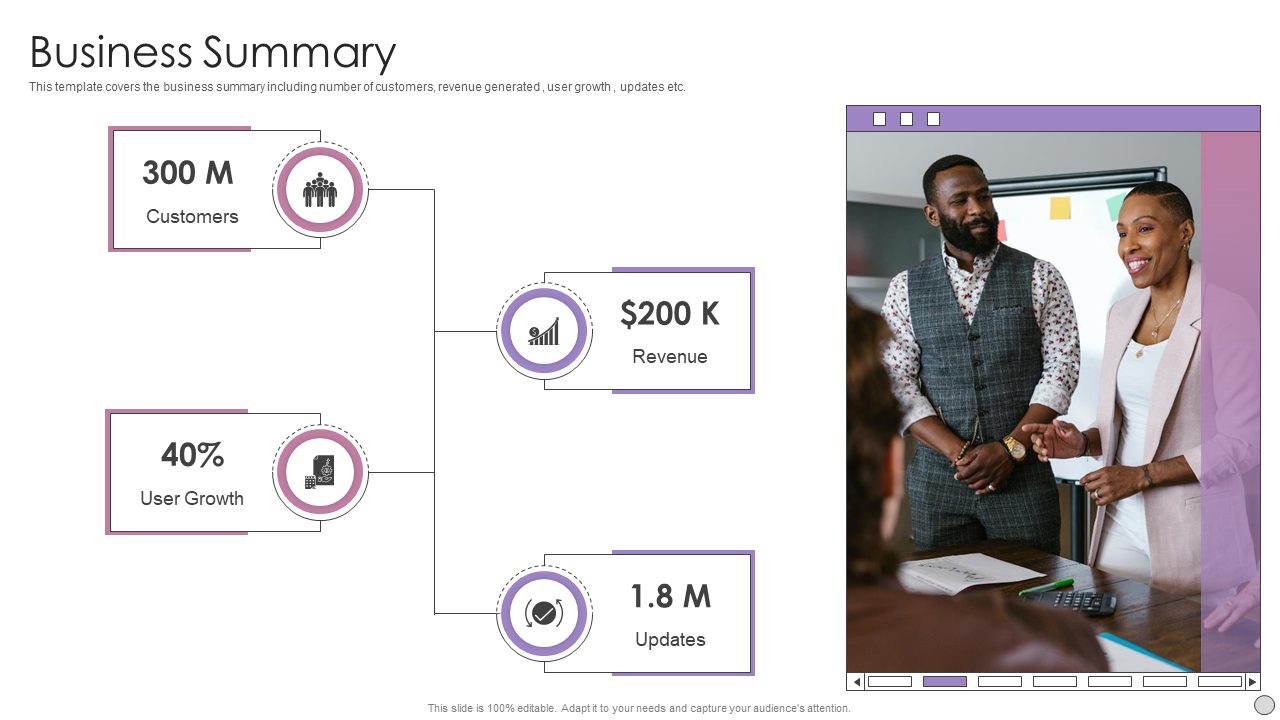
Template 7: Business Summary Social Media Marketing Pitch Deck PPT Design
Are you a beginner at social media marketing? Looking for investors to up notch your social media? Craft a well-designed business summary of your organization with this ready-made PowerPoint Template to prove how promising your business is. Highlight the growth rate, sales, revenue, and more using this content-ready PowerPoint template. This PPT slide is perfect to help you outline a professional business summary to increase credibility. This PPT slide contains custom infographics, charts, graphs, smart art, images, and much more to help you personalize it to meet your brand requirements. Download this template now to create a powerful social media marketing pitch deck!
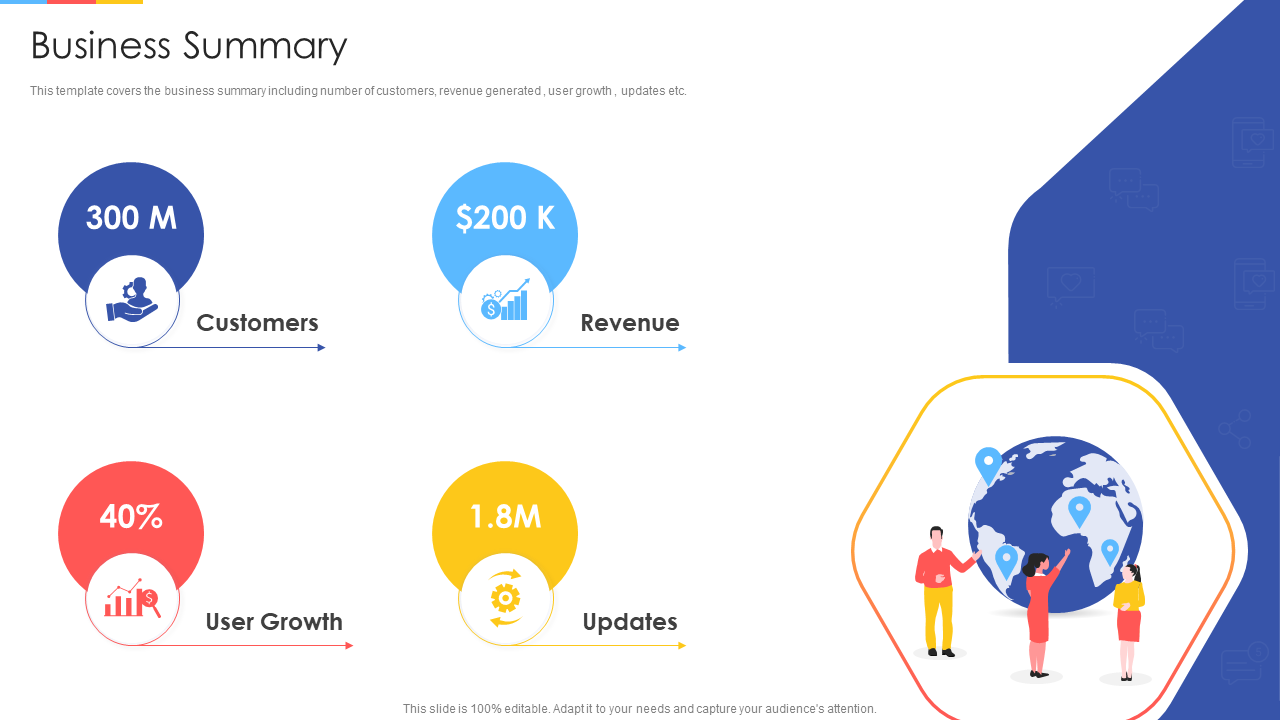
Template 8: One Page Business Summary for Investors PowerPoint Slide
If you want to raise funds from your investors for your venture, use our well-constructed one pager business summary template. It will help you provide an overview of your company to your clients such as, the business summary, the available market, products or services offered, the number of clients, and issues to your investors. You can also showcase your USP to engage the audience. Personalize this PPT template by adding your company's name, logo and address. Download this PPT design and give investors a pitch to remember by creating a hard-hitting business summary.
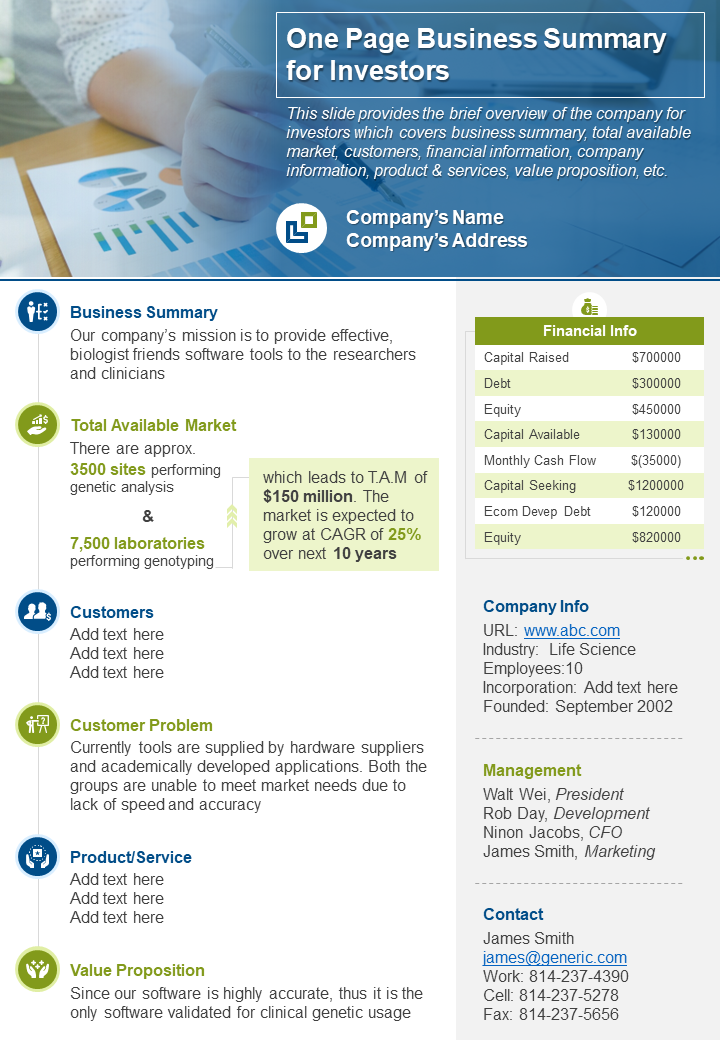
Template 9: Bi Fold Business Summary for Investors Template
Display your business story with the help of our modern Bi-Fold business summary template. This complete deck allows you to highlight your business summary, value proposition, financial information (debt, capital seeking, capital raised, equity, etc.), products & services, etc. of your company. Curated with an assortment of customizable designs, this slide can be shared across print and digital mediums to kick off your project. Deploy this PPT Design to formulate communication collateral for your products.
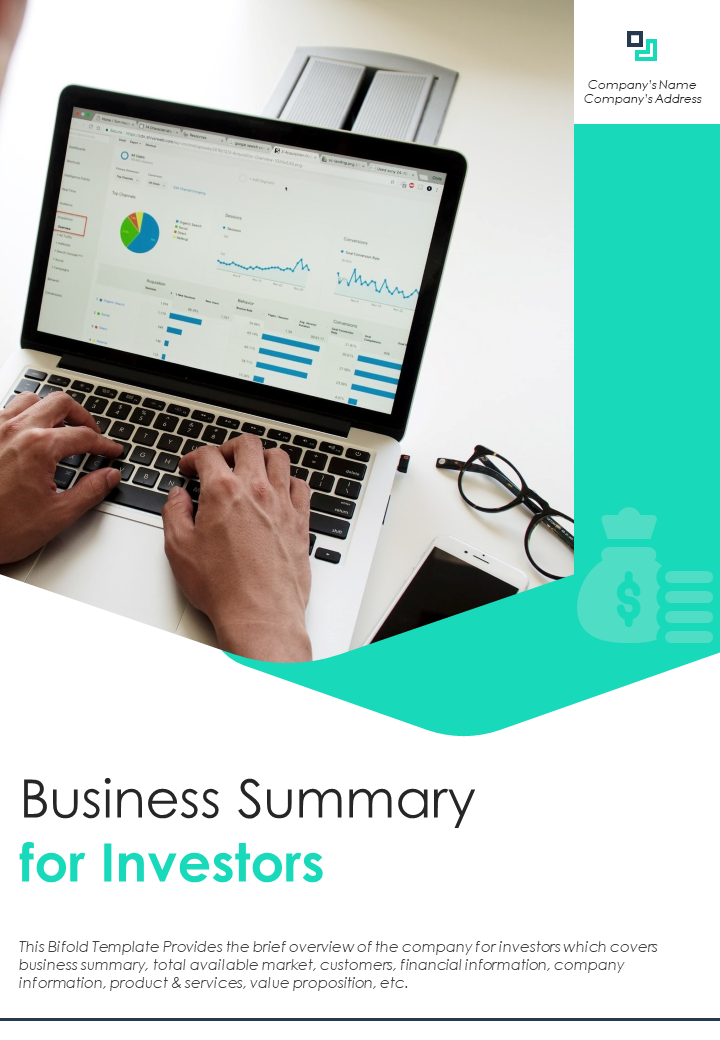
Template 10: Strategic Plan One-Pager Business Summary Presentation Report Infographic PPT Template
Present the overview of your business plan including the vision, mission, objectives, goals, and action plan with the assistance of this one-page business summary report template. Use this slide to demonstrate your company’s strategic mission and highlight key objectives, initiatives, key performance indicators, etc. It displays all and more of these details in a crisp, clear, and digestible format. Deploy this PPT design now to devise a unique strategy, and place your company ahead of your competitors.
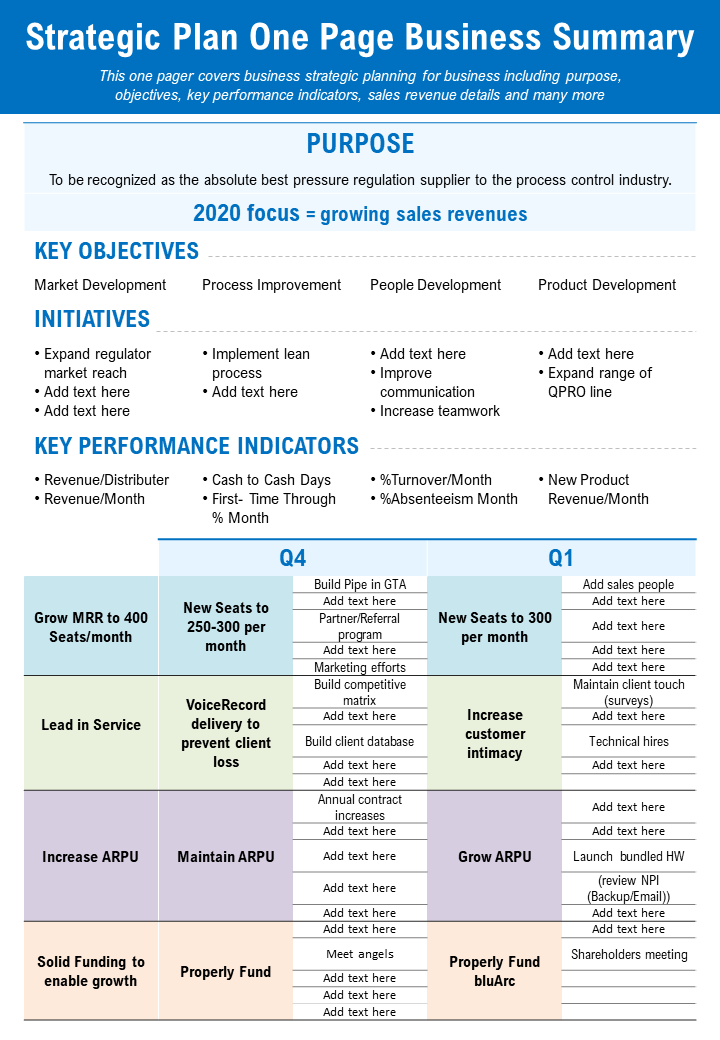
Planning is indispensable
In a nutshell, a short and attention-grabbing business summary is critical for the success of a business plan in terms of attracting the right resources and people. If done in a perfect manner and with the right key words, a business summary is indispensable. The document will help you convince investors, venture capitalists, and the brands for partnerships or sponsorships agreements. Therefore, grab SlideTeam’s content-ready and custom-made PPT templates to curate a professional business summary to expand your services and products.
In case you want additional PowerPoint Presentation guidance to draft or edit your business summary, speak to our experts at SlideTeam, and get your design personalized.
PS: Now that you have detailed information on business summary and a collection of customizable templates, it is important to take people to the idea you have in mind. Wow your investors with your business idea, explore our extensive guide and impress your investors and customers with one page business plans, proposals, and executive summaries templates.
FAQs on Business Summary
What is a good business summary.
A business summary also known as an executive summary is a business plan overview that is used by new entrepreneurs or business owners to succinctly highlight the essential elements of their business ideas to potential stakeholders like angel investors. Usually, a business summary is one pager or 2-4 pages long that sums up the whole business including your target market, financial highlights, the area of dealing, etc., A good business summary should emphasize your company’s story, perform in-depth research, convey information, and grab your readers’ attention by convincing them that it is worth their time to read the rest of the business proposal.
How do you write a business summary?
If you are writing a business summary, these five steps need to be
1) A business plan: The first step is to write the entire business plan so that your business summary can briefly cover the most essential topics, facts and details of your business proposal, give a brief background on your company history, processes, system, team, and more to weave a compelling story to engage the audience.
2) Introduction: The next step is to write an engaging introduction which depends on your audience. For instance, if you are in a tech company, your introduction might include a brief story about tech trends. Make it relevant at all costs; this is fundamental, but often ignored.
3) Business summary: After writing an engaging introduction, go through your business plan and summarize critical points such as the marketing plan, target audience, company description, management team, and so on. Ideally, your business summary should be engaging enough to persuade readers to finish the document.
4) Edit the document: Before finalizing the business summary, make sure that you have double-checked the document for accuracy and clarity. Remove buzzwords, repetitive information, jargon, passive language, unsupported claims, etc. so that your business summary can act as a standalone document.
5) Professional assistance: Once you have cross-checked your business summary, the final step is to seek the assistance of a professional writer or editor, and ensure that your document covers points you are trying to convey.
What should be included in a business summary?
A business summary is a short synopsis of your business plan that addresses topics like:
1) Business description: A business description include a clear picture of your business, the types of products or services it offers, the target market, etc.
2) History: After basic information about the company, add a detailed overview including the establishment date, owner’s background and current location.
3) Achievements: Focus on the highlights of your company such as revenue growth rate, customer growth rate and market share you hope to capture (if you are confident about it).
4) Product description: One or two paragraphs of your business summary should be devoted to the company’s products or services description, reasons for demand growth, and their competitive advantages.
5) Financial overview: If you are an existing company and using a business summary to solicit financing, don’t forget to highlight recent annual sales and growth over the last year.
6) Plans and milestones expected to be achieved: The last paragraph of your business summary should discuss future milestones that your company hopes to achieve in the long run.
Tips: When synthesizing each section, highlight the most relevant details to your readers including facts and statistics that you think they must know or must be eager to know.
Related posts:
- Top 25 Business Action Plan Templates to Map Out Winning Company Strategies
- Looking to Start a Small Business? These Top 15 Printable Business Plan Templates Will Save You Time and Money
- Top 10 Strategic Business Plan Templates with Samples and Examples
- Top 10 Executive Summary Business Plan Templates with Samples and Examples
Liked this blog? Please recommend us

Operations Playbook to Streamline Your Business Processes with Samples and Examples
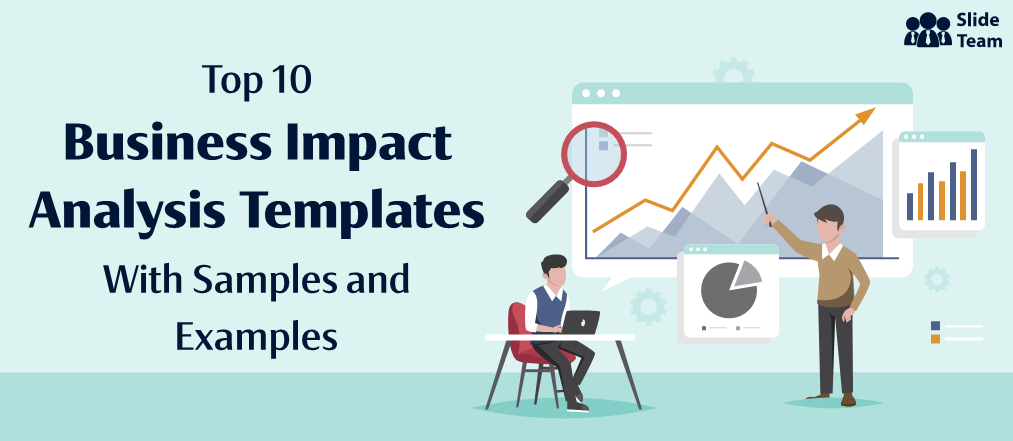
Top 10 Business Impact Analysis Templates With Samples and Examples
This form is protected by reCAPTCHA - the Google Privacy Policy and Terms of Service apply.

Digital revolution powerpoint presentation slides

Sales funnel results presentation layouts
3d men joinning circular jigsaw puzzles ppt graphics icons

Business Strategic Planning Template For Organizations Powerpoint Presentation Slides

Future plan powerpoint template slide

Project Management Team Powerpoint Presentation Slides

Brand marketing powerpoint presentation slides

Launching a new service powerpoint presentation with slides go to market

Agenda powerpoint slide show

Four key metrics donut chart with percentage

Engineering and technology ppt inspiration example introduction continuous process improvement

Meet our team representing in circular format


- Scriptwriting
How to Write a Compelling Movie Synopsis [with FREE Synopsis Template]
G ot a great script idea in your head but not sure how to condense it? That’s why you need a synopsis. But what if you don’t know how to write a synopsis?
As a writer, being able to write a movie synopsis (or one for your TV pilot) is a critical skill. Producers, execs, and agents will often want to read a synopsis before diving into the actual script. And frequently it’s the brief synopsis that convinces them to read your script in the first place.
In this article, we’ll answer, “what is a synopsis.” We’ll also give you solid film synopsis examples, and teach you how to write a synopsis with our free synopsis template.
- When to Use a Synopsis ?
- How to Write a Synopsis ?
- The Do's of Writing a Movie Synopsis
- The Don’ts of Writing a Film Synopsis
- A Synopsis Is a Summary
WHAT IS A SYNOPSIS
1. when to use a synopsis.
Whether it's an epic TV series like Game of Thrones or a rom-com that never leaves one square block in New York City, the brief synopsis has to explain it all.
And explain it quickly.
But how quickly? How long is a synopsis?
And what is a synopsis in the first place? How can you find a good film synopsis example?
We’ll answer all these questions.
Let’s start with the basics. What's a synopsis?
SYNOPSIS DEFINITION
What is a synopsis.
A synopsis is a write-up that describes the plot and world of your story. A script synopsis can be used to sell your idea. A synopsis can also be written when providing screenplay coverage or script analysis to agents, managers, and producers.
You can write a brief synopsis or a long synopsis, depending on the goal. Usually, movie synopsis length is one page or less.
As we explore how to write a synopsis, keep in mind that the key here is brevity.
If it's too short, your movie synopsis is really a logline. If it's too long, it goes into outline or treatment territory.
How do you write a synopsis for Incredibles 2? Hit all the beats quickly
A movie synopsis should explain who is the main character (or characters), what they want, and who or what stands in their way.
It should also function as a plot synopsis in that it should describe broad strokes of what the characters do in an effort to get what they want.
writing a compelling synopsis
2. how to write a synopsis.
So how DO you differentiate your synopsis from a logline or an outline?
A good chunk of it comes down to length. Use our synopsis template to keep yours at the proper length.
Loglines barely cover two sentences. Ideally, they stay at about one.
Outlines can go upwards of five to even ten pages. And treatments can run even longer, breaching the teens.
The reason why outlines and treatments can go so long is that they’re a scene-by-scene breakdown written in prose.
An outline or treatment is obviously not a novel, but basic concepts and actions of every scene need to be covered.
Write already! A brief synopsis is a summary, a showcase, and a key to unlock your story
When you’re writing a synopsis, you should stay to one page or less — not a word longer.
Let’s get into the nitty gritty of writing a synopsis right now.
Related Posts
- Learn how to write an outline →
- Get tips on how to write a film treatment like a pro →
- Break down a script with professional production software →
WRITING A SYNOPSIS
3. the do's of writing a movie synopsis.
Learning how to write a movie synopsis isn’t rocket science.
Sure, the film synopsis for Armageddon probably mentioned rocket science, but writing a synopsis isn’t nearly as hard as landing a drill on an asteroid hurtling toward Earth.
At least it doesn’t have to be.
What is a synopsis? Sometimes it’s a rocket ride.
Here’s a list of everything you should take into account when figuring out how to write a synopsis for your project.
- Length : Keep your synopsis to one page. Anything longer than that and it defeats the point of writing a synopsis.
- Tone and Voice: Your movie synopsis should be written in the present tense, third person. Tell the story in the same tone and voice as the script.
- Characters: Make sure you introduce each character with something unique about them, whether it's a physical feature or another idiosyncrasy. The reader should know exactly who each character is, what they want, and why they want it.
- Dialogue : Should a movie synopsis include dialogue? Absolutely. Should it be whole paragraph chunks? Absolutely not. Dialogue should be included in short bursts, used as a way to add color to the characters in the plot synopsis.
- The Ending : What is a synopsis if it doesn't end? The goal here isn’t to flesh out the trailer, so don't keep any secrets when writing your movie synopsis.
These are the priority items on your "how to write a synopsis" to-do list. But to really elevate it, here are more tips to make yours stick out.
- Start with the active drive. Right off the bat, your movie synopsis should clearly explain what the main character wants and what they're doing about it.
- Establish causality . No story exists in a vacuum. So in your film synopsis, make sure the causality from one event to another is explained. Imagine that the words "therefore" and "but" are between each major plot point.
- Start big, end bigger . Your first paragraphs should really hook in the reader with a compelling introduction of your hero. The ending should be even more exciting and tie all the loose ends together.
Now, take all these tips into account and complete the exercise below. It'll strengthen your writing and give you confidence you can use:
SYNOPSIS DRILL
Want to know how to write a synopsis for your movie? Practice is key. Flex your synopsis-writing muscles by choosing two films (or TV shows) that you've recently watched, or that you've always loved. Write a one-page synopsis of each project.
Don't overthink, don't second-guess, and limit yourself to one page for each title. When you've finished, compare the two. Which synopsis is stronger? Are there any points you've missed? How could they be strengthened? What works in each one, and what doesn't? Congratulations — you've got two short synopsis examples under your belt.
The best way to learn how to write a synopsis is to write a synopsis. After you complete the above exercise, you'll come into writing your own synopsis with practical experience and open eyes. As a result, the process won't be unfamiliar, and your work will be stronger.
- Learn how to energize your story with conflict →
- Find out how to write the best character arcs →
- Start shot listing and storyboarding right away →
Best practices when writing A Film SYNOPSIS
4. the don’ts of writing a film synopsis.
Now that you know how to write a synopsis, let's take a look at how to avoid common mistakes.
While there are no hard and fast rules to answer what is a synopsis, it's best to avoid the following errors when writing one:
- Don’t mention too many characters. We don't need the backstory on the waitress at the bar where the two main characters talk. A brief synopsis means you have to let go of these unnecessary elements.
- Don't use too much detail about plot twists and turns. If you explain what someone does and why in your movie synopsis, the twists and turns will make sense to the reader.
- Don't editorialize your film synopsis. We don't need flowery, superfluous language like "in a poignant scene" or "like two star-crossed lovers." Get to the point quickly and clearly.
- Don't make it a marketing tool. Writing a synopsis shouldn't be like writing a pitch deck or a creative brief. A movie synopsis should be a preview of what the story is and who's in it, that way the reader can see how you executed and wrote the story.
- Don't rush to the end . As we said earlier, a brief synopsis should be your goal, but it can be hard to learn how to write a synopsis if you don't have any meat in the middle. That great ending won’t pay off if we don’t know or understand the journey to get there.
When it comes down to how to write a synopsis (and figuring what is a synopsis) the best bet is to tackle the basics of the story head-on.
Save the literary flourishes for the actual script and keep it to the meat and potatoes of the story. The goal here is to provide a brief synopsis, a basic plot synopsis.
You’ll expand and get into nuance and dialogue later, when you actually write the script.
FREE Download: Movie Synopsis Template
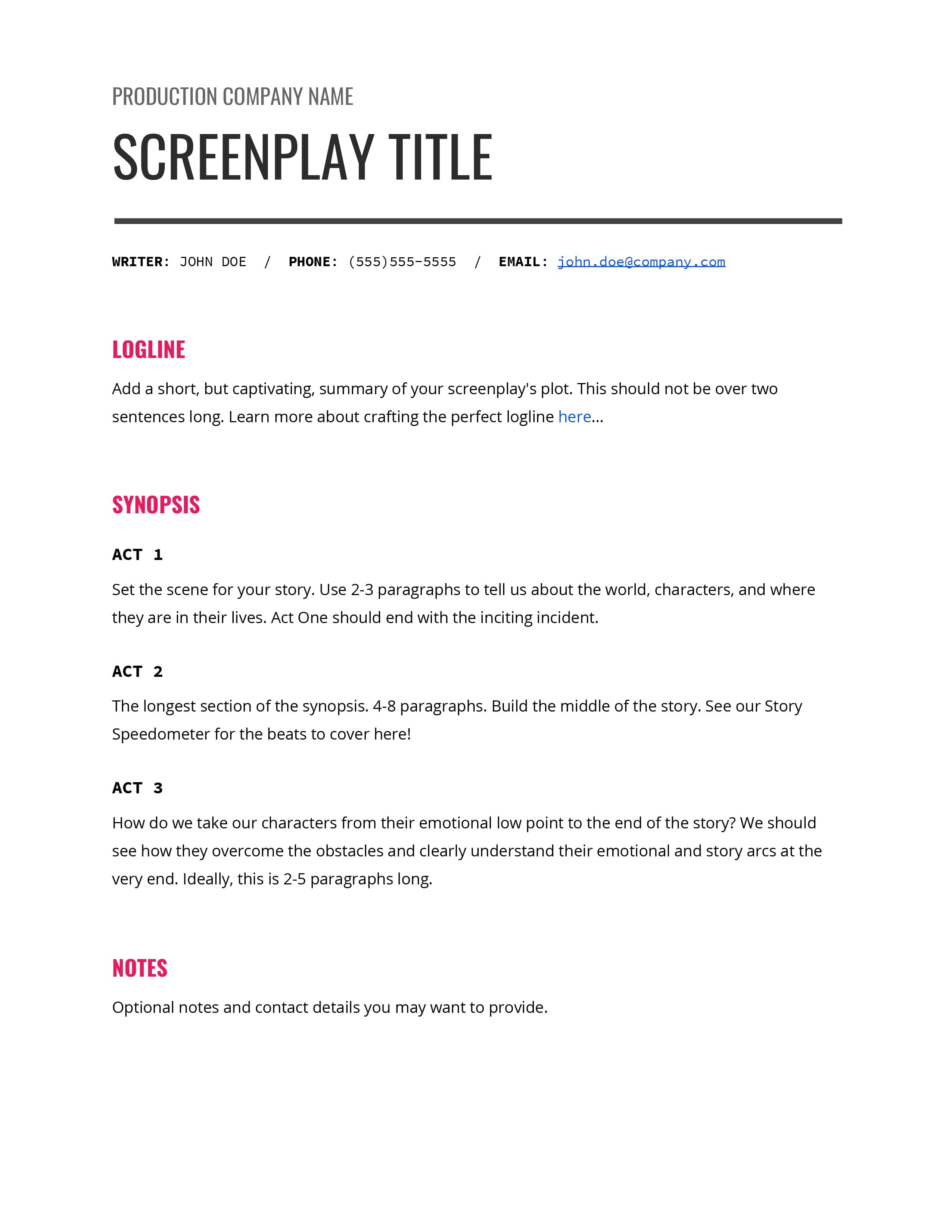
Write your movie synopsis more effectively with our FREE Movie Synopsis template. Enter your email address to receive it instantly.
HOW TO WRITE A SYNOPSIS FOR A MOVIE
5. a synopsis is a summary.
Let’s summarize our synopsis guidance.
How to write a synopsis comes down to a few things.
What is a synopsis?
A synopsis is a one-page write-up that explains the basic plot and world of your project. Who’s who, what’s what, and why should we care.
Who writes a movie synopsis?
Well, the writer definitely should. But also readers.
If anyone is covering an agent's or an executive's desk, they're going to break down and analyze dozens of scripts. Doing so will require writing a clear, brief synopsis for every project.
We have provided solid rules about best practices when writing a synopsis.
But even after you’ve written a good synopsis , make sure your story is structurally sound before moving into the outline, treatment, and script phases.
Using templates and techniques like story circle can help ensure any writer that the structure of their script leads to a dynamic narrative.
That way, when you start figuring out how to write a synopsis for a project, you won't have to worry about any dragging or lagging elements.
After all, no one wants to read a soggy second act. A good synopsis, written with our free template as a guide, will kickstart your storytelling process on the right foot.
How to Write Script Coverage
As you see now, synopses are mainstays on both sides of the industry — business and creative. That's a clear indicator of their importance and why you need to be able to answer the question: what is a synopsis?
More importantly, if you’re a storyteller, you need to know how to write a synopsis.
Now that we’ve given you the tools to write a synopsis, it’s time to learn how to analyze a script. Take it to the next level and find out how to write screenplay coverage like a professional industry reader.
Up Next: How to Write Script Coverage →
Write and produce your scripts all in one place..
Write and collaborate on your scripts FREE . Create script breakdowns, sides, schedules, storyboards, call sheets and more.
15 comments
Enjoyed this article, it will prove invaluable on my first feature project. And I look forwards to applying what I have learned from it. Thank you Studio Binder
Thnx for all this ressources ??????
Thank you so much for sharing this info. I am a first time screen writer, producer & director. These articles are vital and will give me the extra push in pursuing my dreams.
i am following every article posted on studiobinder . These articles helps me in my projects. Keep posted new articles related Cinematography . Thank you studiobinder.
Thank you very much for this article. It became very useful to me.
Thanks studiobinder for posting this very useful article learned a lot …..
Thank you STUDIO BINDER for sharing such a wonderful details for a Synopsis. It will be very useful for the movie makers, as some interested parson dont get proper guidelines how to make it.
This is a very helpful document. That was beautifully and clearly presented. Thank you
Thanks a lot guys, this was very detailed, made it so easy
Thank you for sharing such valuable information. A very helpful Document
Thanks a lot for such valuable piece!
Thank you for all the information and resources shared!
Very helpful.Gratitude filled my heart for your valuable support.
Leave a comment
Your email address will not be published. Required fields are marked *
- Pricing & Plans
- Product Updates
- Featured On
- StudioBinder Partners
- The Ultimate Guide to Call Sheets (with FREE Call Sheet Template)
- How to Break Down a Script (with FREE Script Breakdown Sheet)
- The Only Shot List Template You Need — with Free Download
- Managing Your Film Budget Cashflow & PO Log (Free Template)
- A Better Film Crew List Template Booking Sheet
- Best Storyboard Softwares (with free Storyboard Templates)
- Movie Magic Scheduling
- Gorilla Software
- Storyboard That
A visual medium requires visual methods. Master the art of visual storytelling with our FREE video series on directing and filmmaking techniques.
We’re in a golden age of TV writing and development. More and more people are flocking to the small screen to find daily entertainment. So how can you break put from the pack and get your idea onto the small screen? We’re here to help.
- Making It: From Pre-Production to Screen
- What is Film Distribution — The Ultimate Guide for Filmmakers
- What is a Fable — Definition, Examples & Characteristics
- Whiplash Script PDF Download — Plot, Characters and Theme
- What Is a Talking Head — Definition and Examples
- What is Blue Comedy — Definitions, Examples and Impact
- 898 Facebook
- 1.8K Pinterest
- 28 LinkedIn
Synopsis Presentation Template
Download this template as well as our other 21,747 templates for only $99.

Slide: 1 / 20
Synopsis Presentation Template Special Features
Make your next PowerPoint, Google Slides, or Keynote presentation more effective with our professionally designed Synopsis template. Improve the way you present seminars, webinars and lectures. Make more exciting sales presentations, trade show displays and product promotions, or use them in any educational setting for more impact and greater retention.
Synopsis presentation template includes built-in layouts and stunning backgrounds to make your presentation a winner. The attention we pay to the finest detail make this presentation template truly world-class.
We take pride in employing features most companies skip because it's "too much work." This Synopsis presentation theme is carefully considered and implemented to maximize the beauty, consistency, clarity and -- most importantly -- audience impact of your presentation.
Intuitive and Easy To Use
Enhanced colors, stunning imagery, professional typography, make life easy, 17 professional pre-made slides, make life even easier.
All our presentation templates are saved in POT, PPT, and PPTX formats to make them compatible with your presentation software like Office for Mac, Keynote, Google Docs, OpenOffice, and others. Some MS PowerPoint features may not be supported by your presentation software. Please read more about Microsoft PowerPoint compatibility in your software documentation.
- All Themes (16676)
- Abstract/Textures (2449)
- Agriculture (338)
- America (206)
- Animals and Pets (344)
- Animated (32)
- Art & Entertainment (802)
- Business (1951)
- Business Concepts (3754)
- Careers/Industry (2977)
- Cars and Transportation (482)
- Computers (284)
- Construction (976)
- Consulting (2852)
- Education & Training (2803)
- Financial/Accounting (903)
- Flags/International (297)
- Food & Beverage (754)
- General (12382)
- Global (704)
- Health and Recreation (306)
- Holiday/Special Occasion (1167)
- Legal (219)
- Medical (1236)
- Military (137)
- Nature & Environment (1665)
- People (1868)
- Politics and Government (234)
- Real Estate (283)
- Religious/Spiritual (480)
- Sports (732)
- Technology and Science (2159)
- Telecommunication (497)
- Utilities/Industrial (407)
With the all-inclusive price of $99 you are only paying $.01 per template!
Join our 81,530 happy customers and get complete access to our 21,747 templates, 100% satisfaction guaranteed or your money back.
sign up today
Home Collections Market Executive summary
Executive Summary Presentation Templates
Make your executive summaries stand out with our executive summary powerpoint templates and google slides themes. crafted for clarity and impact, our 100% editable designs help you highlight key points and present data persuasively. ideal for professionals aiming to impress free downloads are available. make every summary an opportunity to excel..
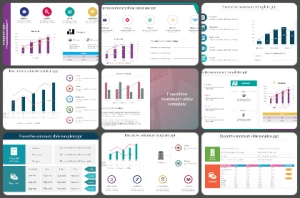
We're here to help you!
What is an executive summary.
An Executive Summary is a brief and clear overview of a larger document prepared for business purposes, such as business plans, company descriptions, investment or project proposals, financial information, market analysis, etc.
What are Executive Summary Presentation Templates?
An Executive Summary Presentation Template can help you present the key components related to your business in a summarized form. It will deliver your content appealingly to unlock new business opportunities.
Where can we use these Executive Summary Slides?
Every business can use these Executive Summary Slides to give a quick overview of essential information to the stakeholders and investors.
How can I make Executive Summary Slides in a presentation?
You can make creative Executive Summary Slides with innovative infographics, charts, and tables to make your summary easy to follow. Our tips and tutorial page will guide you to design the best presentation from scratch.
Who can use Executive Summary Presentation Templates?
CEOs, business executives, department heads, and supervisors can use Executive Summary Presentation Templates to present the summary.
Why do we need Executive Summary Presentation Slides?
Executive Summary Presentation Slides can help you deliver a summary of a larger document clearly and precisely to persuade decision-makers.
Where can I find Executive Summary Presentation Templates for Free?
You can search the internet to find a collection of Free slides for your needs. SlideEgg also has a cluster of 80+ Executive Summary Presentation Templates to help to prepare professional-looking presentations.

IMAGES
VIDEO
COMMENTS
Arrange them so the ideas addressed appear at the top of the page and the benefits appear at the bottom. Condense each sentence so it is short and easy to understand. Write the synopsis, as a paragraph or a page, based on the outline you just created. Once you've documented what people will learn and how it will benefit them, your synopsis is ...
1. Format your title page following your instructor's guidelines. In general, the title page of a research synopsis includes the title of the research project, your name, the degree and discipline for which you're writing the synopsis, and the names of your supervisor, department, institution, and university.
How to Download Synopsis PowerPoint Templates for presentations? To download Synopsis presentation templates, you can follow these steps: Select the resolution (16*9 or 4*3). Select the format you want to download the Synopsis template in (Google Slides or PowerPoint). Make the payment (SlideUpLift has a collection of paid as well as free ...
With a complete set of thirty-two slides, this PPT is the most comprehensive summary of the Tqm Overview Powerpoint Presentation Slides you could have asked for. The slide is easily available in both 4:3 and 16:9 aspect ratio. This template is compatible with Google Slides, which makes it accessible at once.
Here's a genericized executive summary slide based on material provided by a recent client. This recap was created to give the VP of Sales a comprehensive overview of last quarter's sales performance across all three company brands (A, B, and C). The full presentation deck contained about 30 slides, with detailed sections for each brand.
Third Person Presentation: Write the synopsis in the third person, even if your story is primarily in the first person. This maintains a professional and objective tone. ... How To Write A Synopsis Examples . Writing a synopsis means summarizing a big piece of work in a short and interesting way. It could be a story, a movie, or even a research ...
Synopsis is a brief outline of the research that you produce before Research Degree Committee (RDC) for approval. It proposes the best design and a blue prin...
Purpose of the Guide. This Guide was created to help Ph.D. students in engineering fields to design dissertation defense presentations. The Guide provides 1) tips on how to effectively communicate research, and 2) full presentation examples from Ph.D. graduates. The tips on designing effective slides are not restricted to dissertation defense ...
A synopsis is a brief summary which gives readers an overview of the main points. In an academic context, this is usually a summary of a text (a journal article, book, report etc) but in some instances you might be writing a synopsis of a talk, film or other form of presentation. A synopsis is a neutral summary, objectively capturing the main ...
They can be used by professionals, educators, or students to create visually appealing presentations for business meetings, academic lectures, or project summaries. Download your presentation as a PowerPoint template or use it online as a Google Slides theme. 100% free, no registration or download limits. Use these summary templates to create ...
A synopsis example can make it easier to understand how to summarize a larger piece of work. Luckily, you can find several tailored examples with our list.
The purpose of a presentation summary is to deliver the message clearly and reinforce ideas in the audience's minds. But before you begin to write it, start by answering a few questions- ... You can then tailor the material accordingly and use a pre-designed Executive Summary template to communicate the same effectively. 2. Use Graphs and ...
Step 1: Review the Entire Presentation. Start by going through the entire PowerPoint presentation. Reviewing the presentation in its entirety allows you to get a sense of the overall flow and the key themes. Pay attention to the title slides and the concluding slides, as they often contain the main message and summary points.
This template can be used to pitch topics like synopsis of artificial intelligence transformation playbook. In addtion, this PPT design contains high resolution images, graphics, etc, that are easily editable and available for immediate download. Slide 1 of 2.
Business Presentation: The Ultimate Guide to Making Powerful Presentations (+ Examples) A business presentation is a purpose-led summary of key information about your company's plans, products, or practices, designed for either internal or external audiences. This guide teaches you how to design and deliver excellent business presentations ...
What you really need now is a summary! To start working on it right away, you just need the help of this editable template. It's great for creating presentations, and this one will remind you of a notebook, kind of. It has markers on the right side, to which you could add hyperlinks if you wish to jump to a certain part of the slideshow.
How to write a novel synopsis in 4 steps. 1. Get the basics down first. When it comes to writing a synopsis, substance is the name of the game. No matter how nicely you dress it up, an agent will disregard any piece that doesn't demonstrate a fully fleshed out plot and strong narrative arc. So it stands to reason that as you begin writing ...
Personalize this PPT template by adding your company's name, logo and address. Download this PPT design and give investors a pitch to remember by creating a hard-hitting business summary. Download Now! Template 9: Bi Fold Business Summary for Investors Template. Display your business story with the help of our modern Bi-Fold business summary ...
Practice is key. Flex your synopsis-writing muscles by choosing two films (or TV shows) that you've recently watched, or that you've always loved. Write a one-page synopsis of each project. Don't overthink, don't second-guess, and limit yourself to one page for each title. When you've finished, compare the two.
A PowerPoint template is a pattern or blueprint for your slides that you save as a .pptx or .potx file. All the Synopsis PowerPoint templates are natively built in PowerPoint, using placeholders on the slide master, color palettes, and other features in PowerPoint, and can contain layouts, theme colors, theme fonts, theme effects, background styles, and even content (according to Microsoft ...
Synopsis presentation template includes built-in layouts and stunning backgrounds to make your presentation a winner. The attention we pay to the finest detail make this presentation template truly world-class. We take pride in employing features most companies skip because it's "too much work." This Synopsis presentation theme is carefully ...
Make your executive summaries stand out with our executive summary PowerPoint Templates and Google Slides Themes. Crafted for clarity and impact, our 100% editable designs help you highlight key points and present data persuasively. Ideal for professionals aiming to impress! Free downloads are available. Make every summary an opportunity to excel.